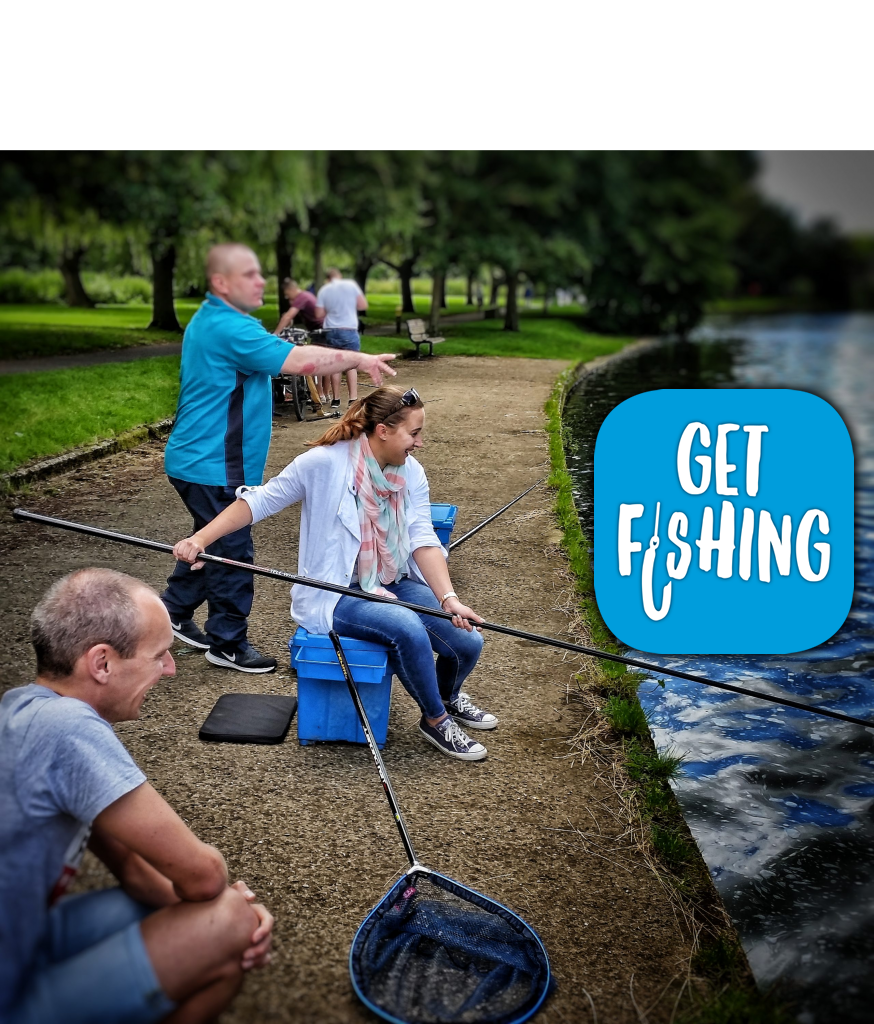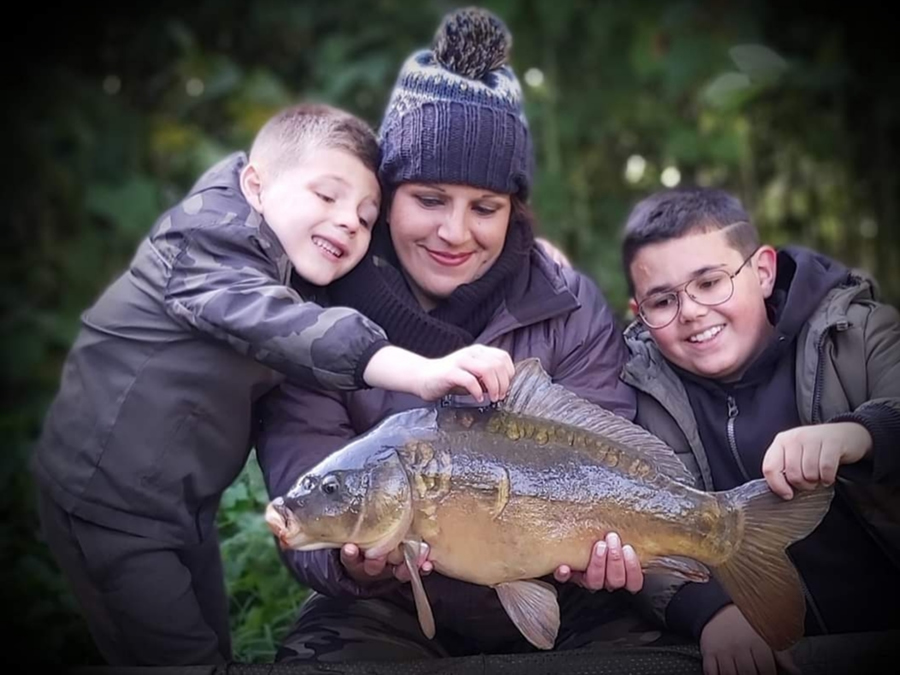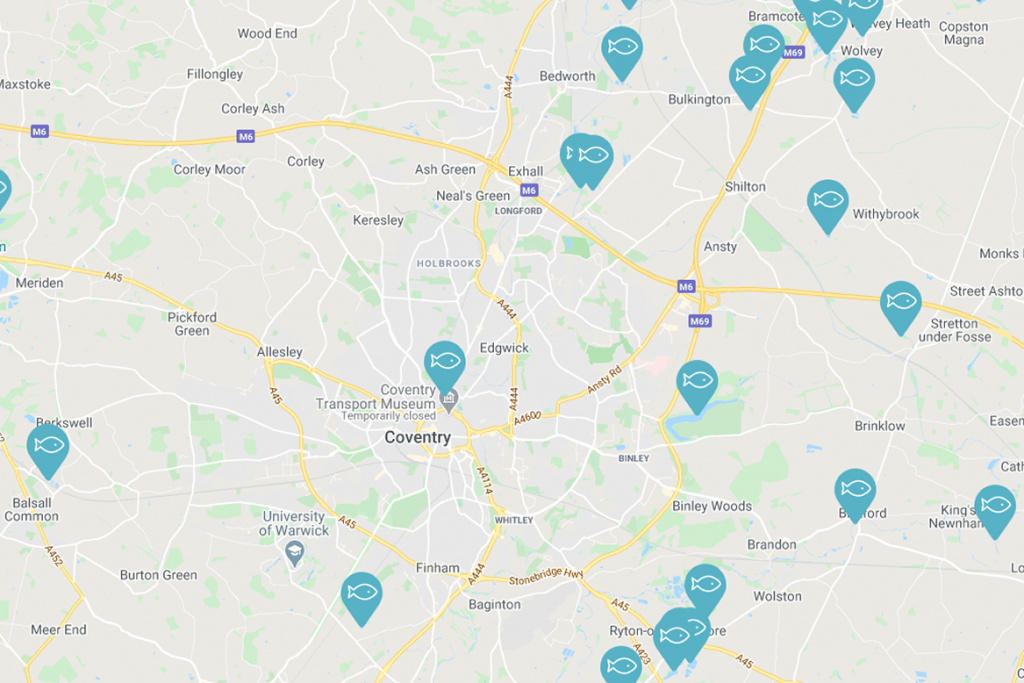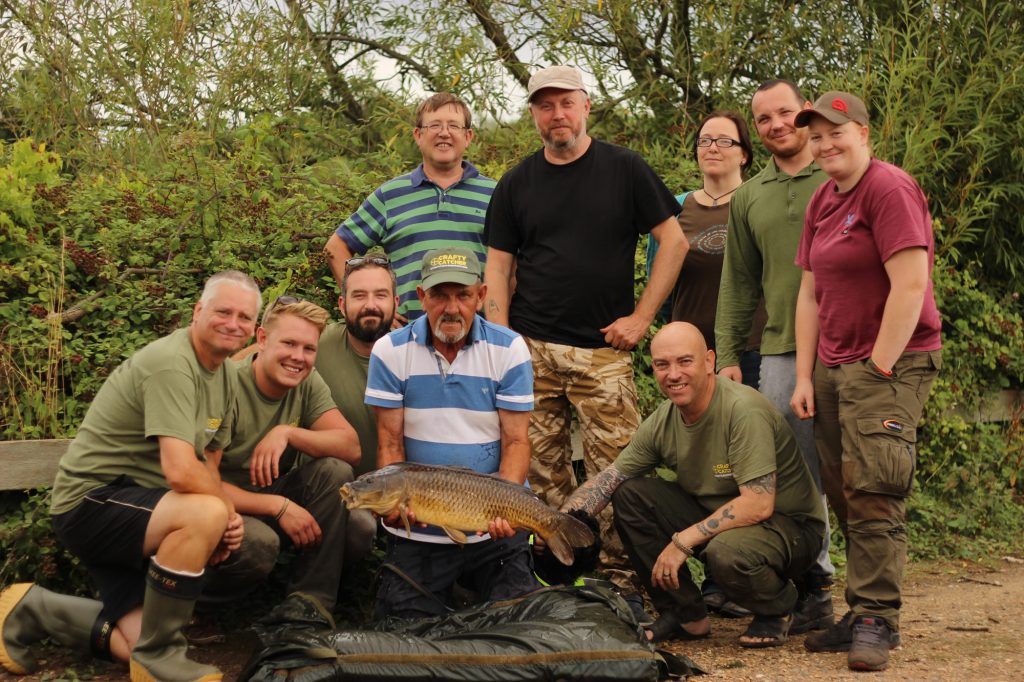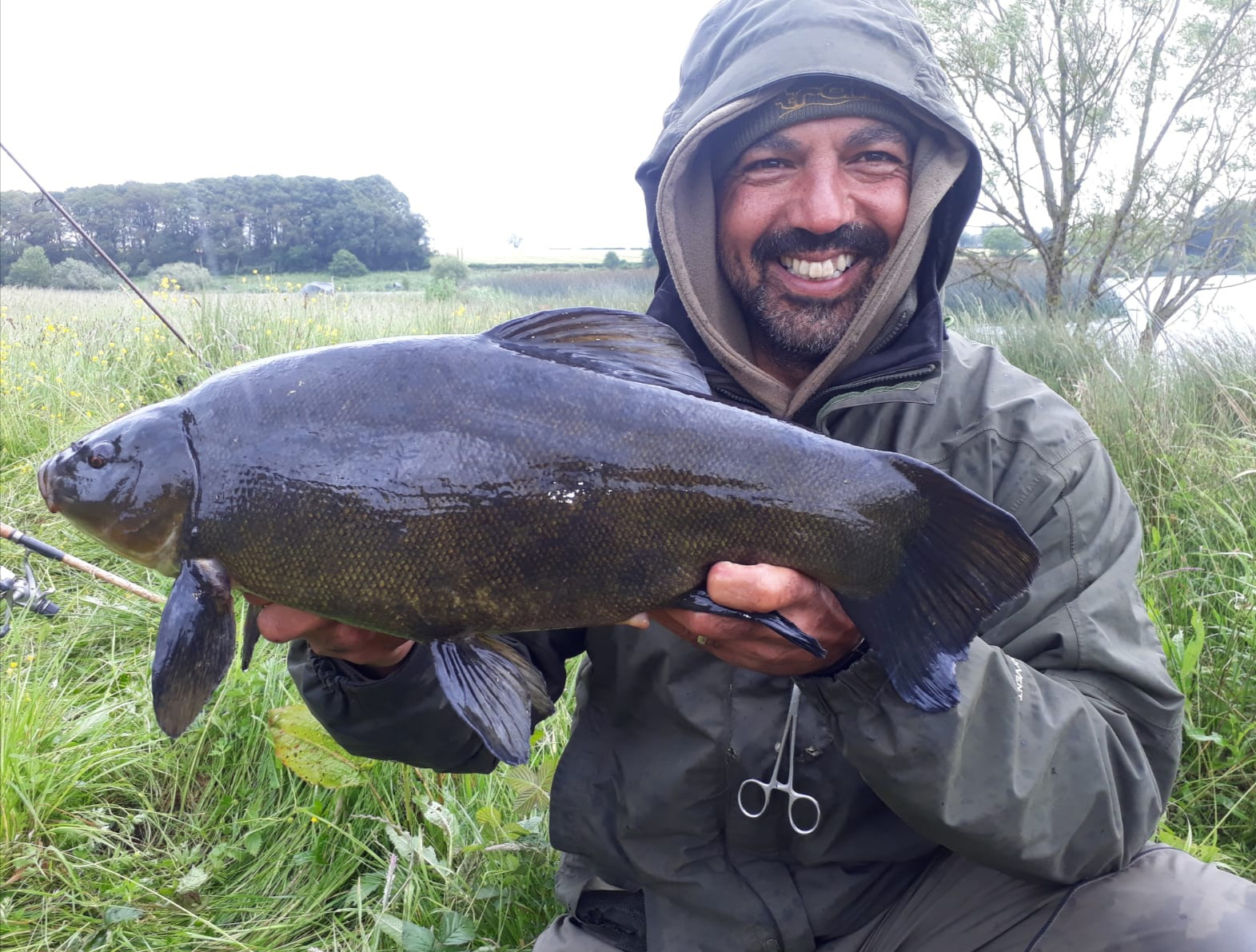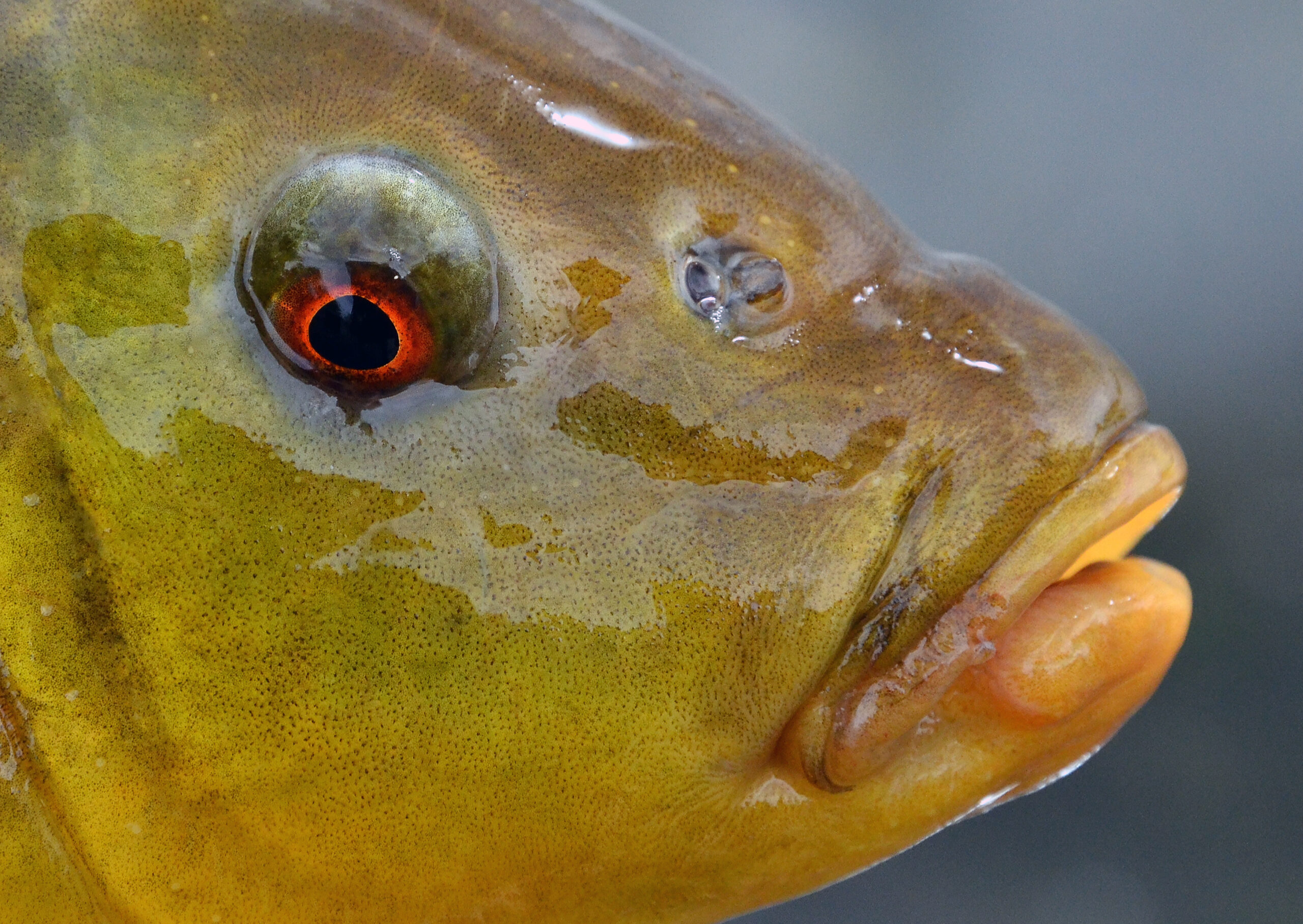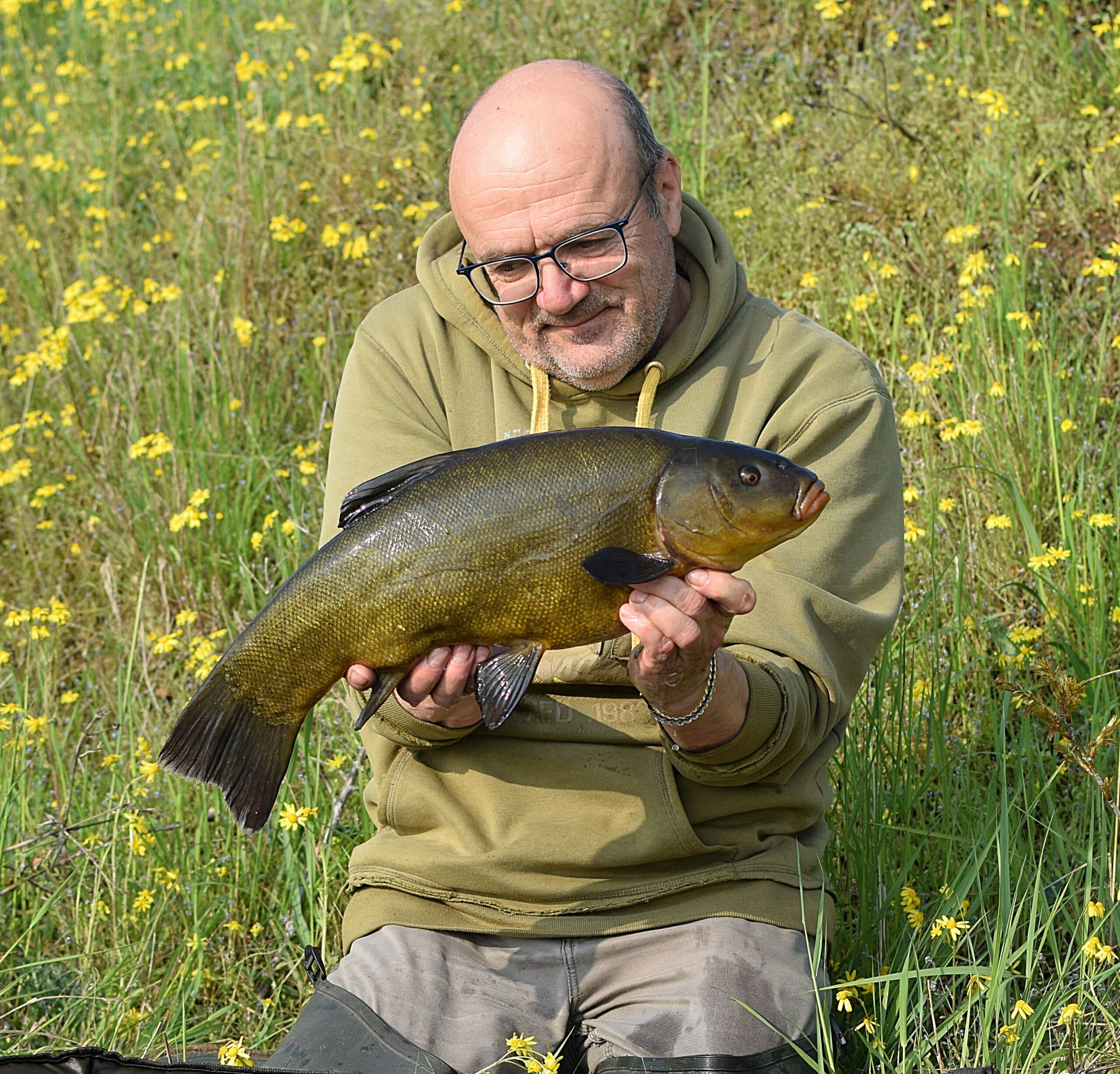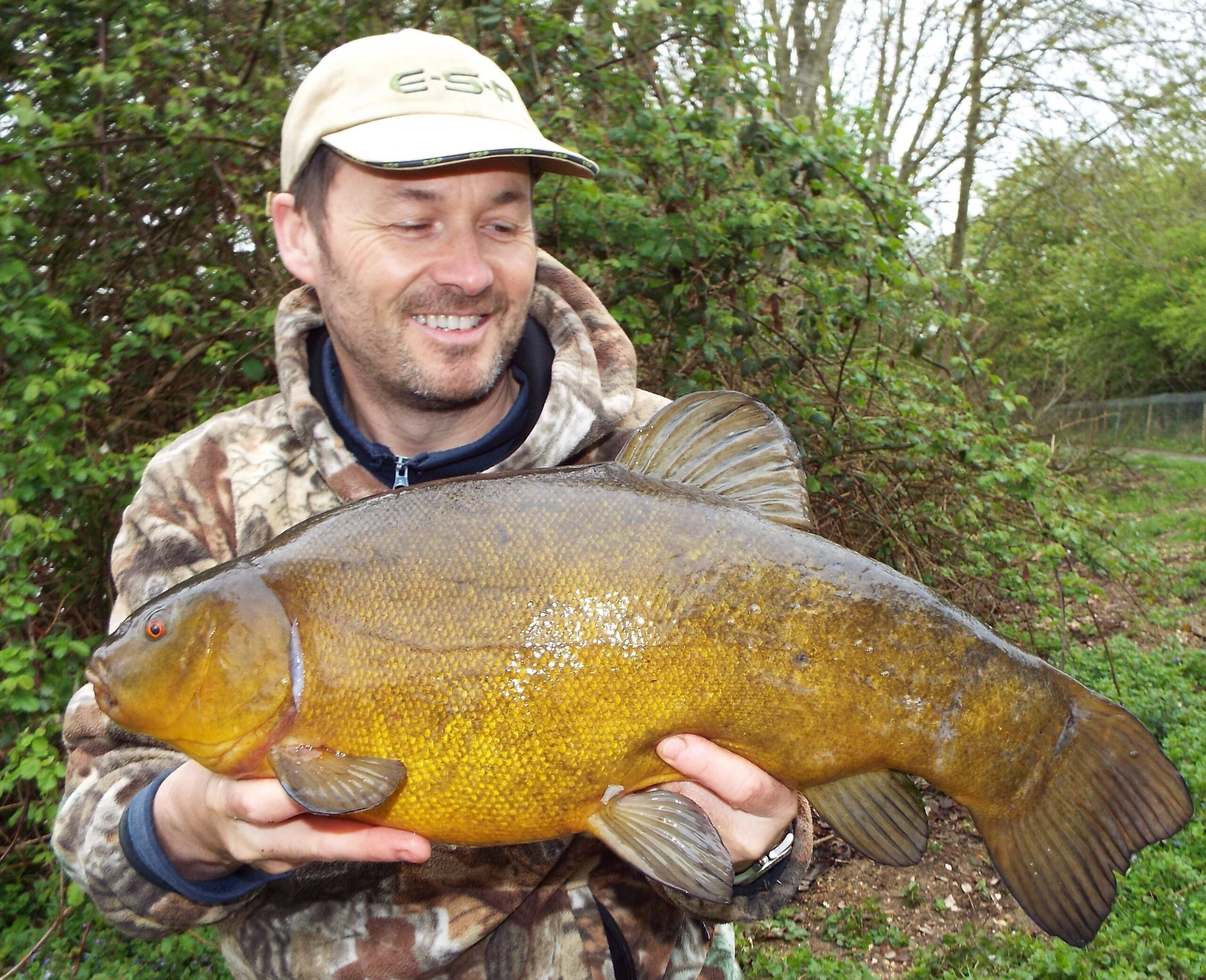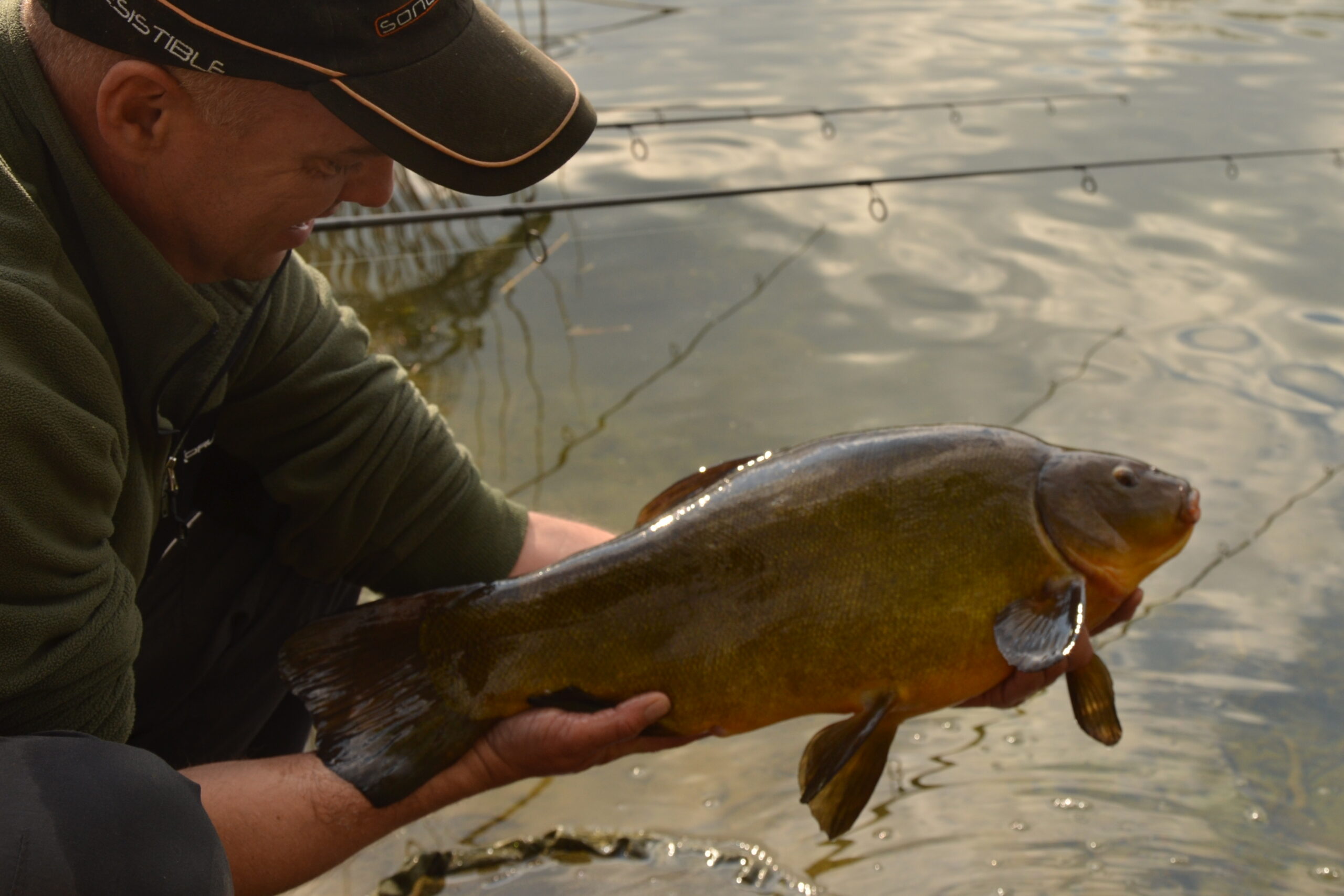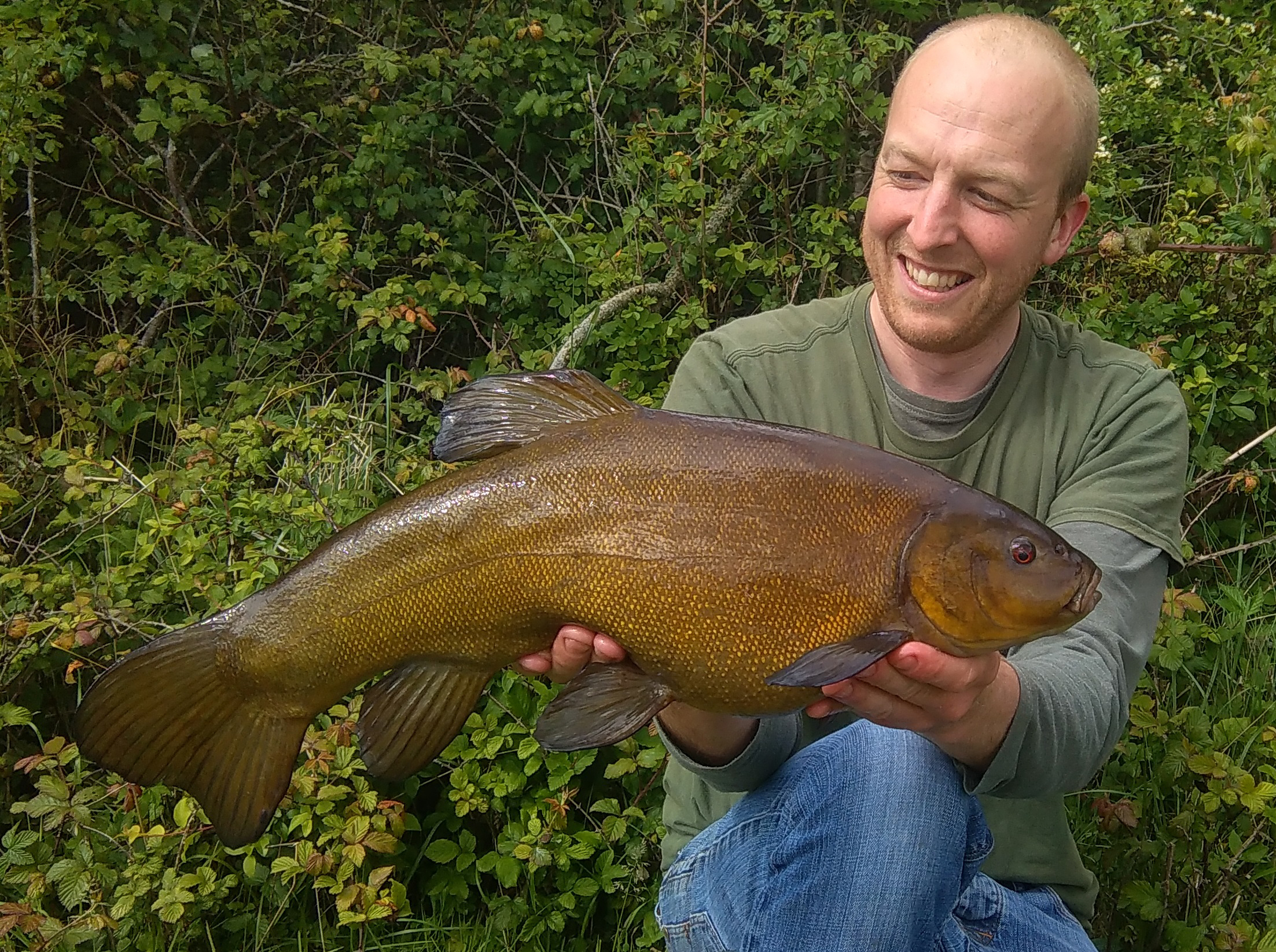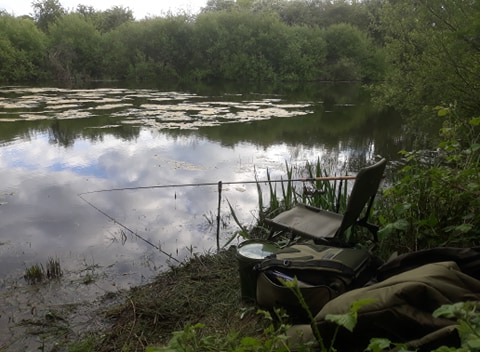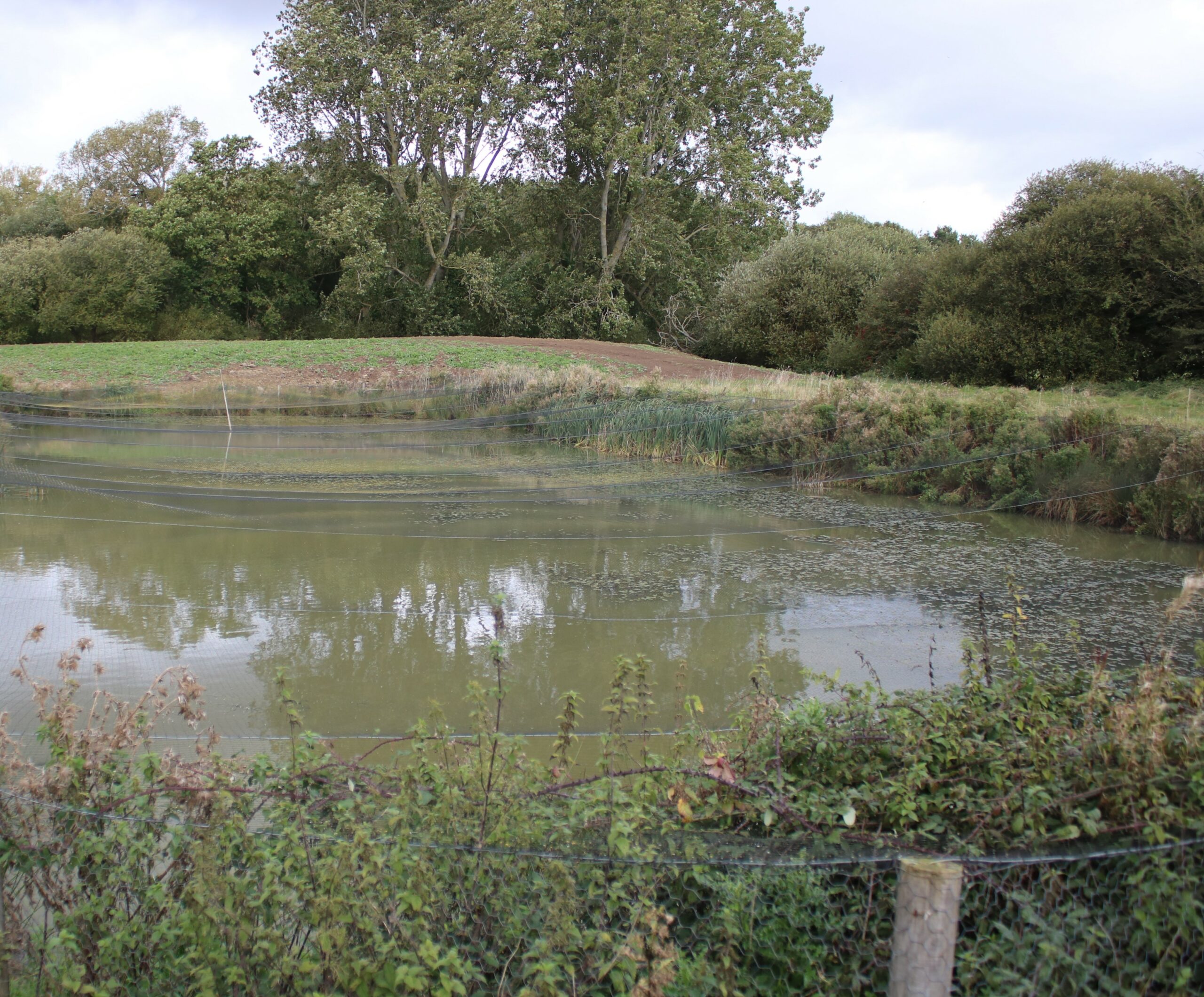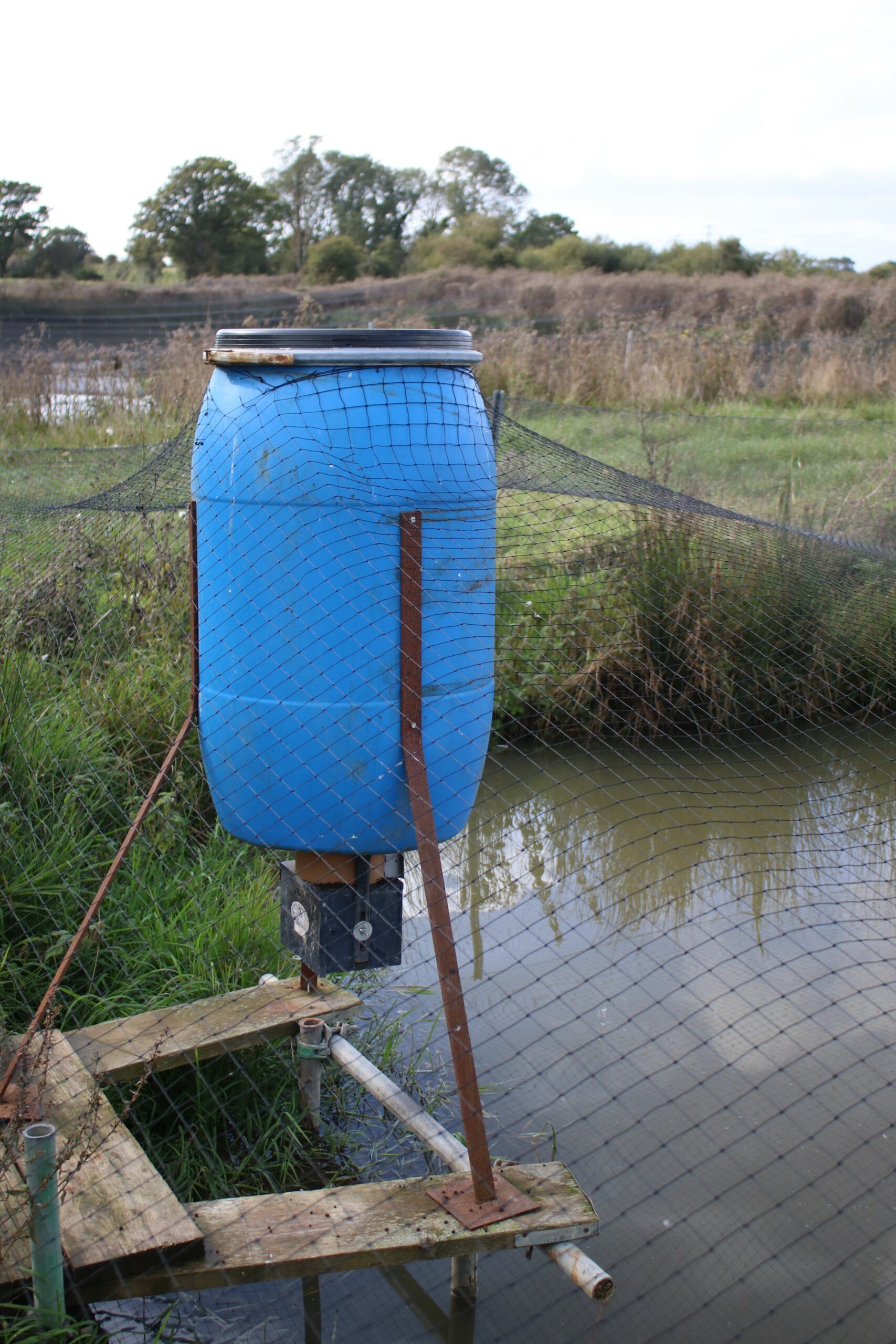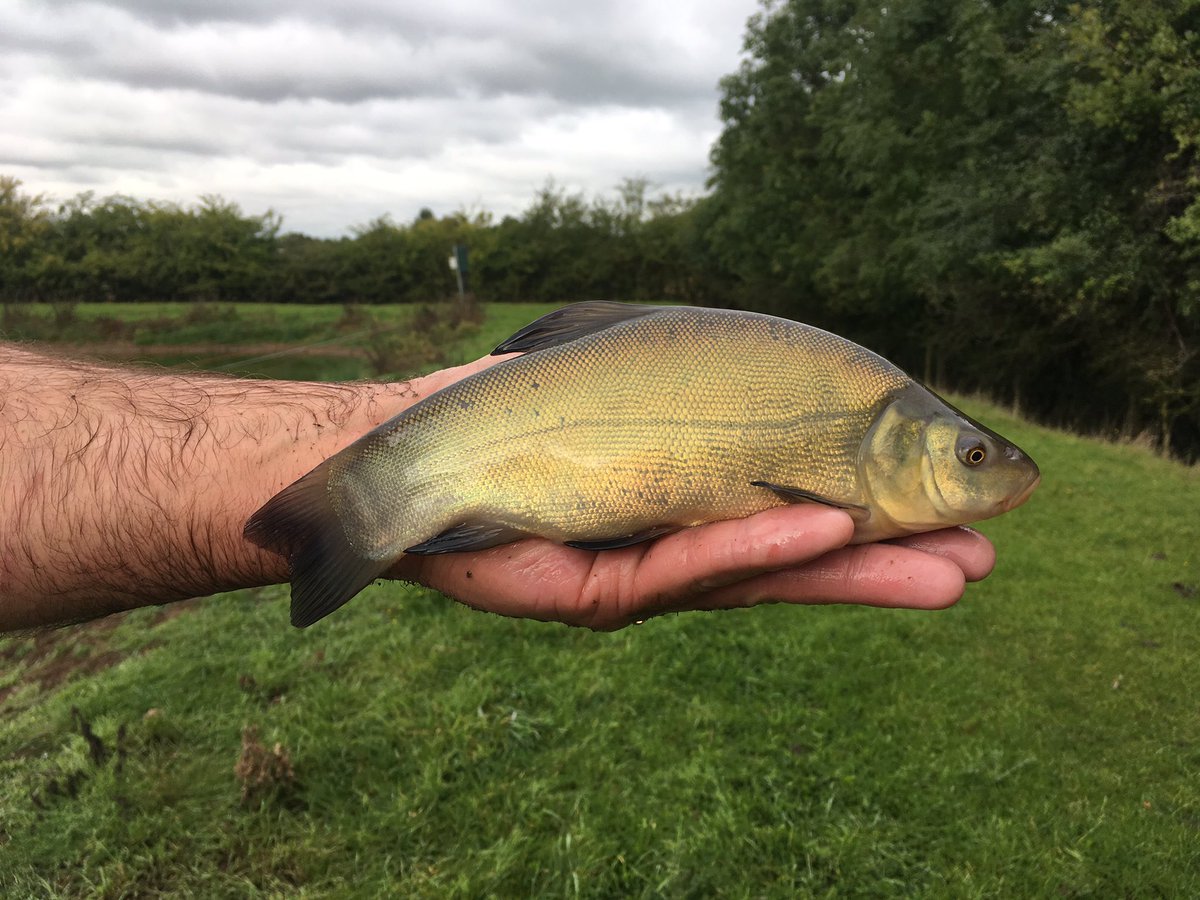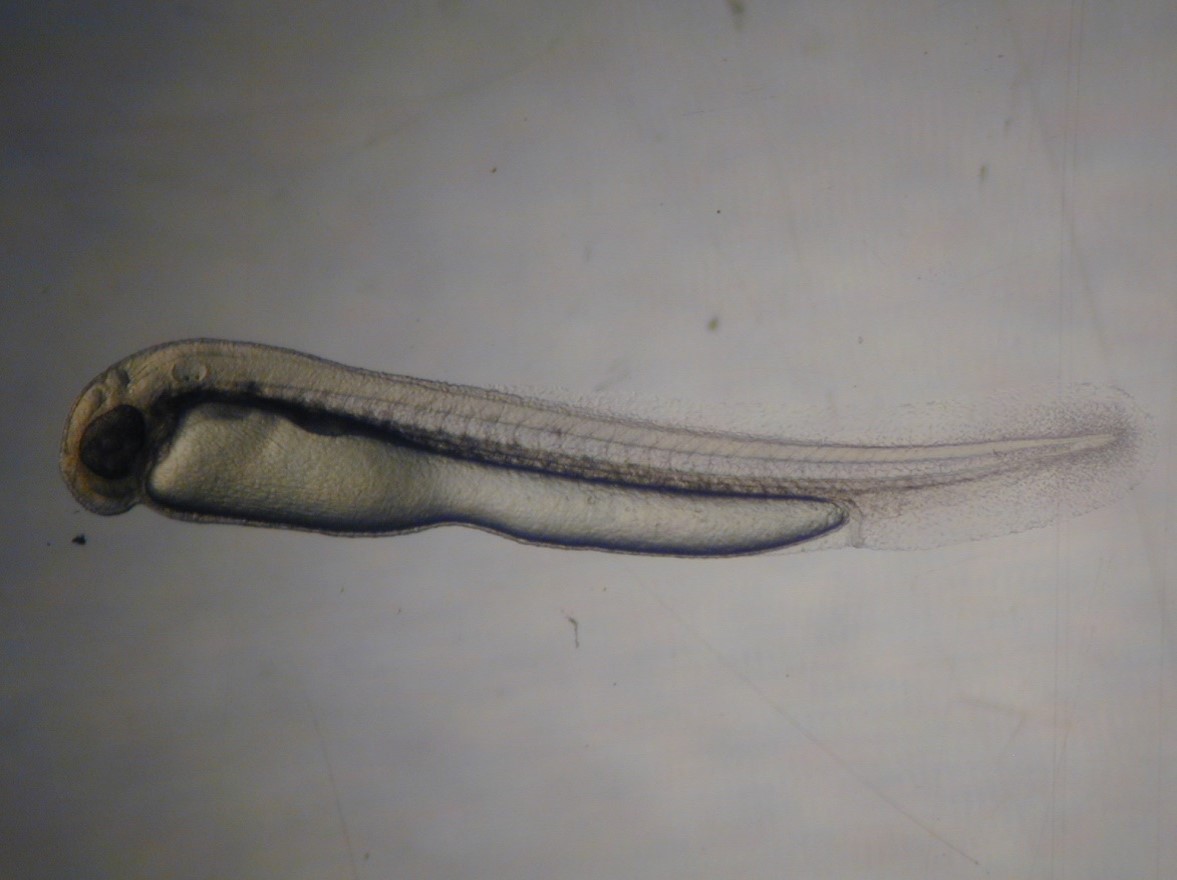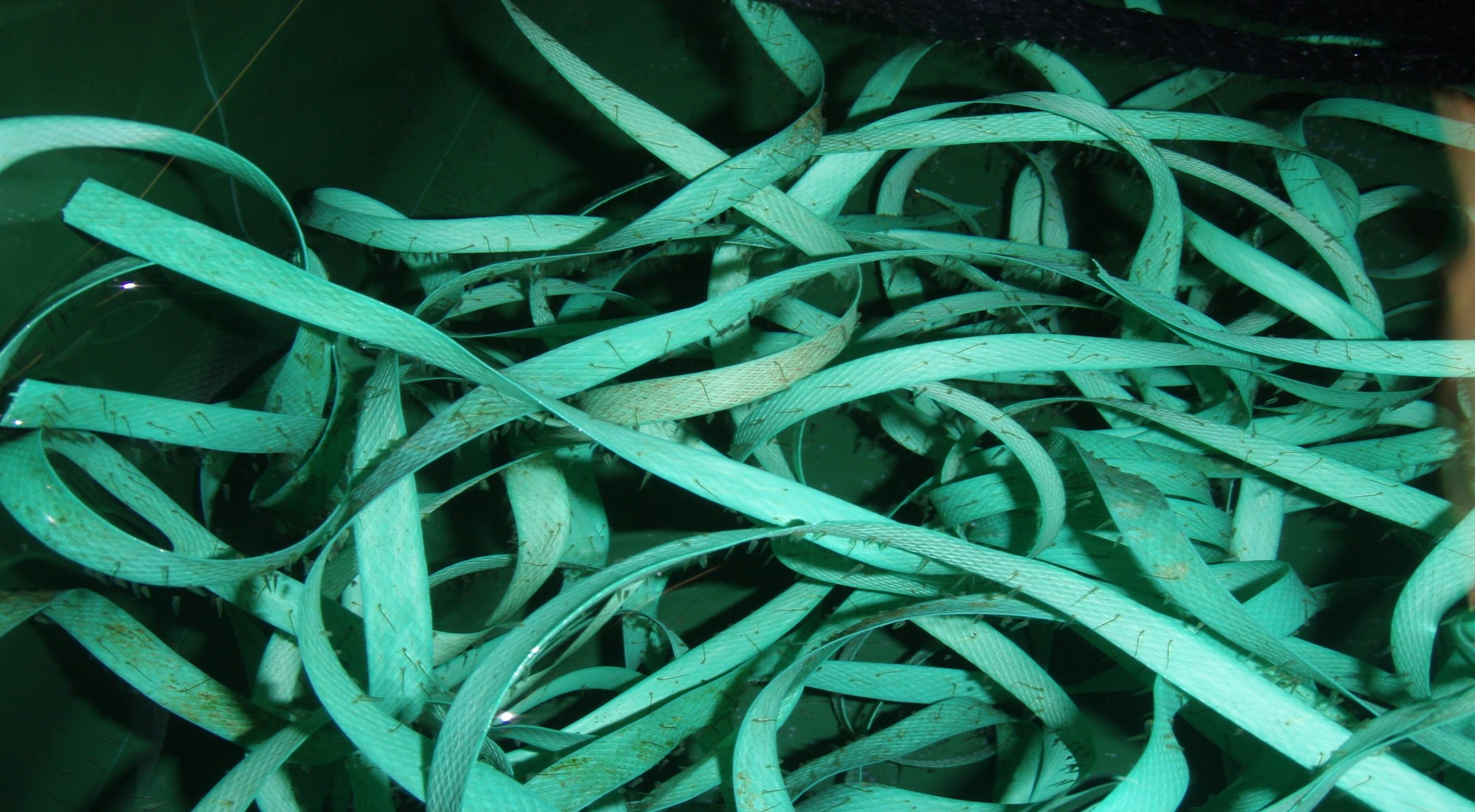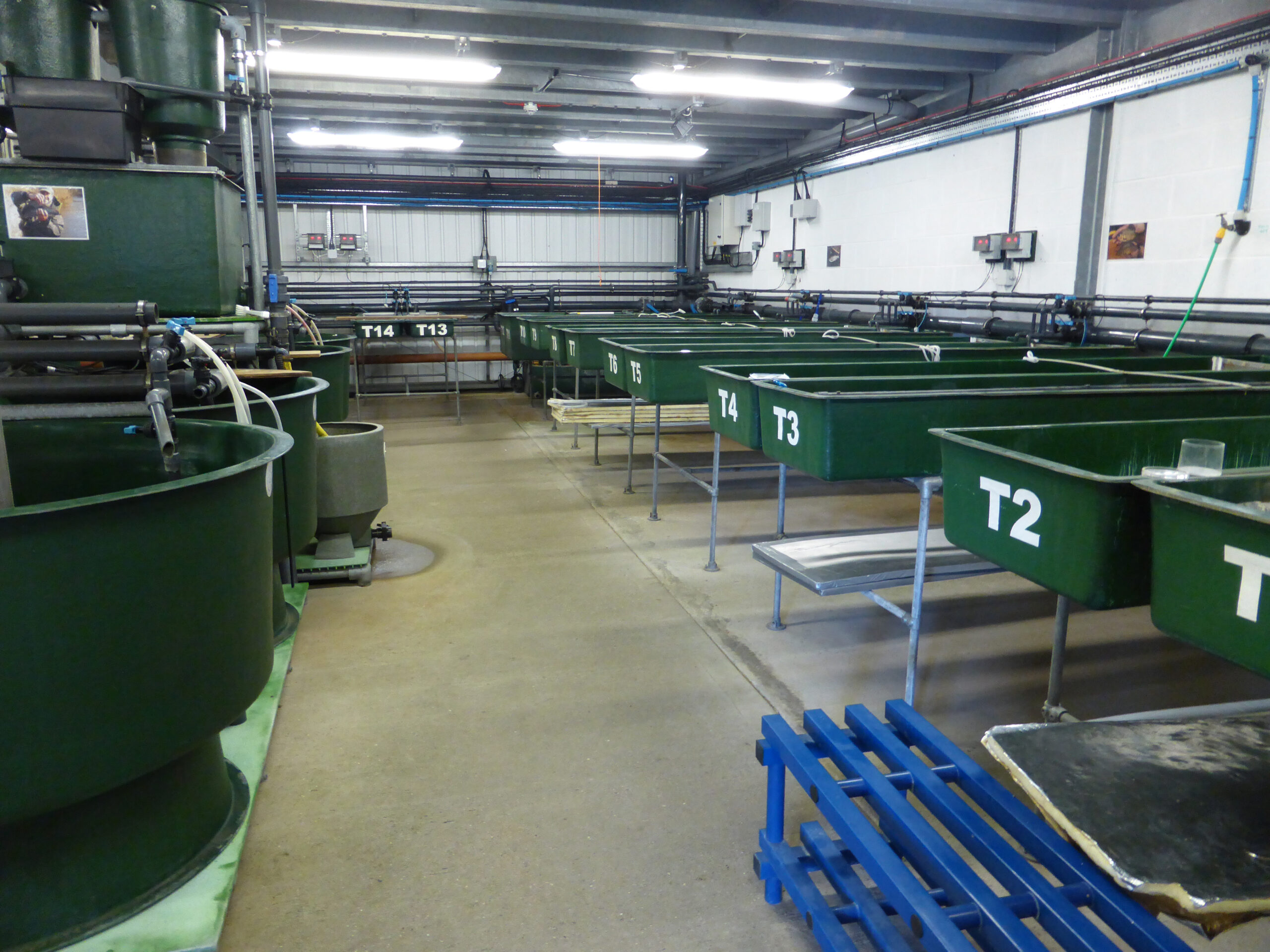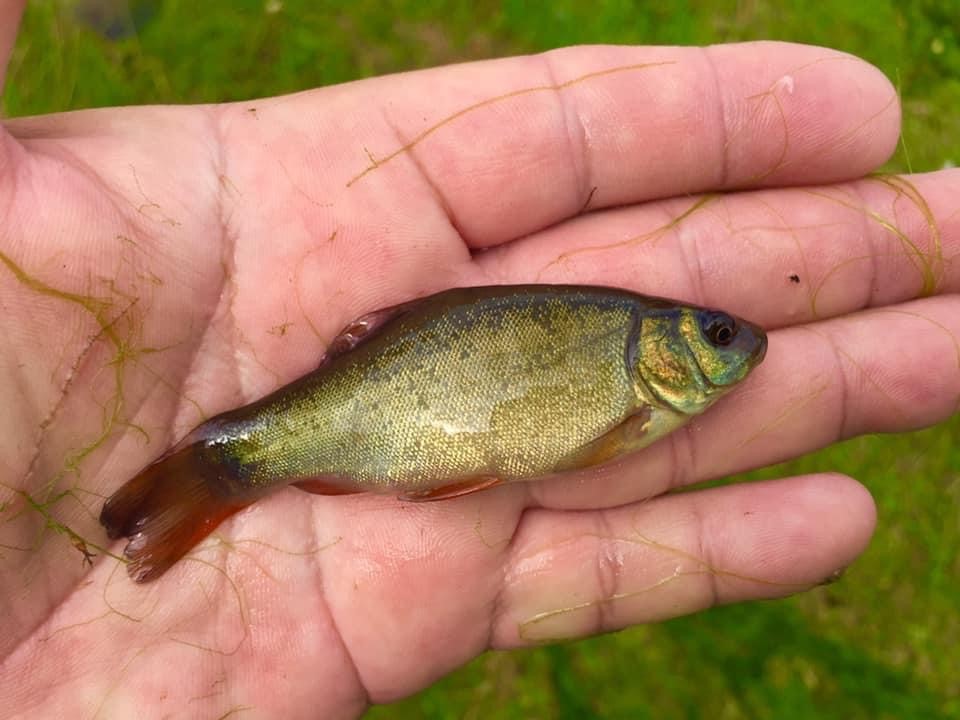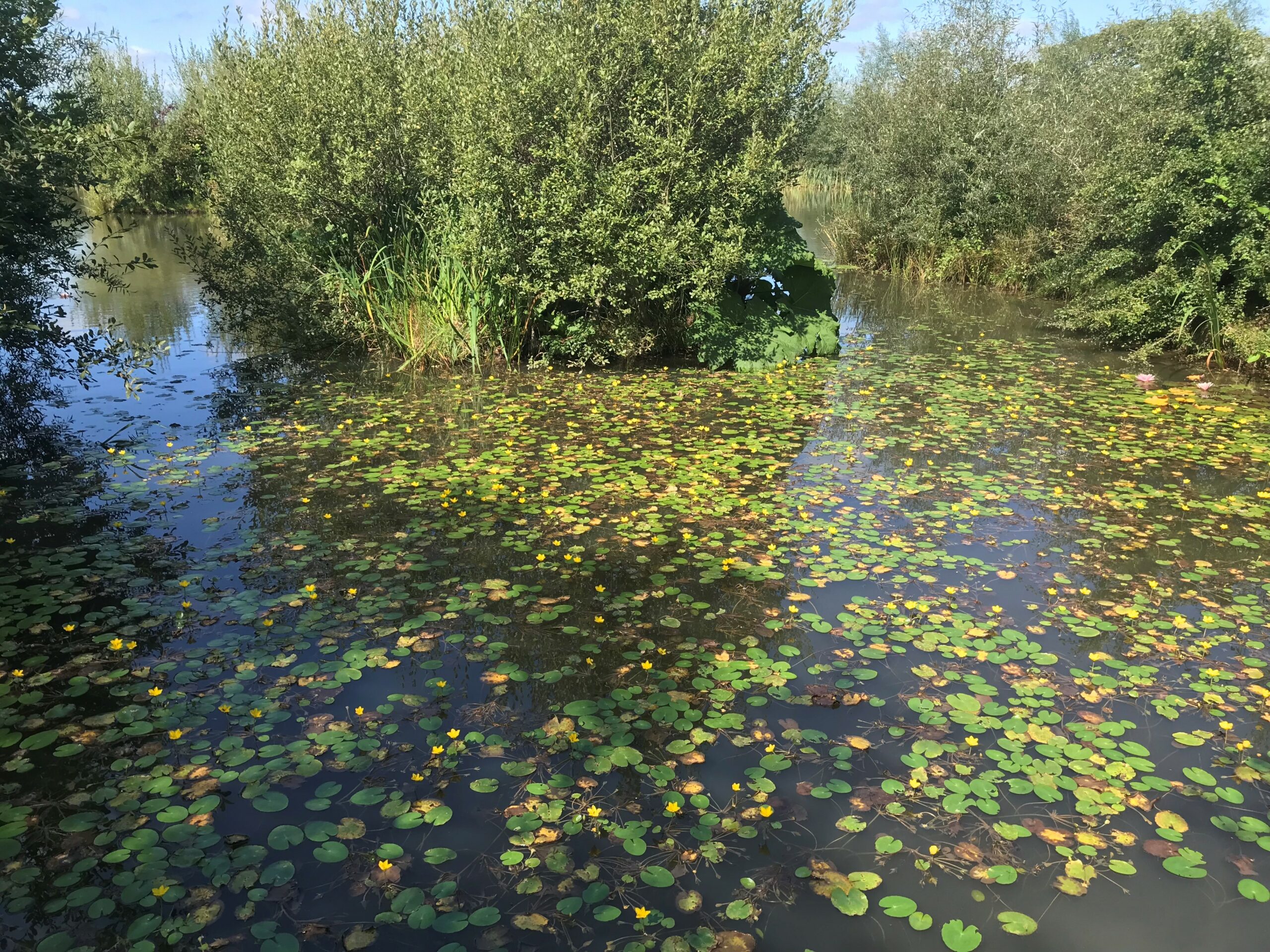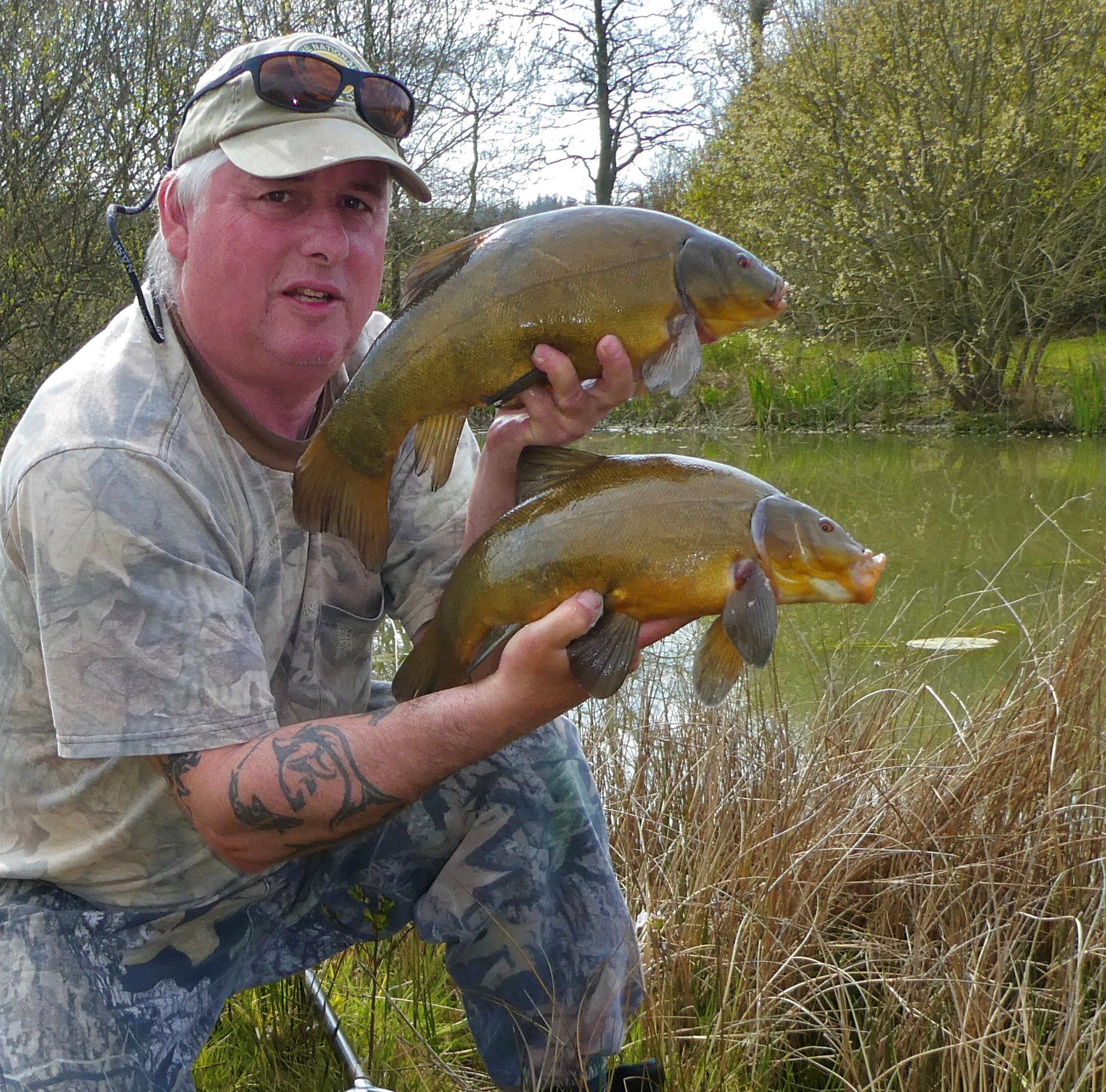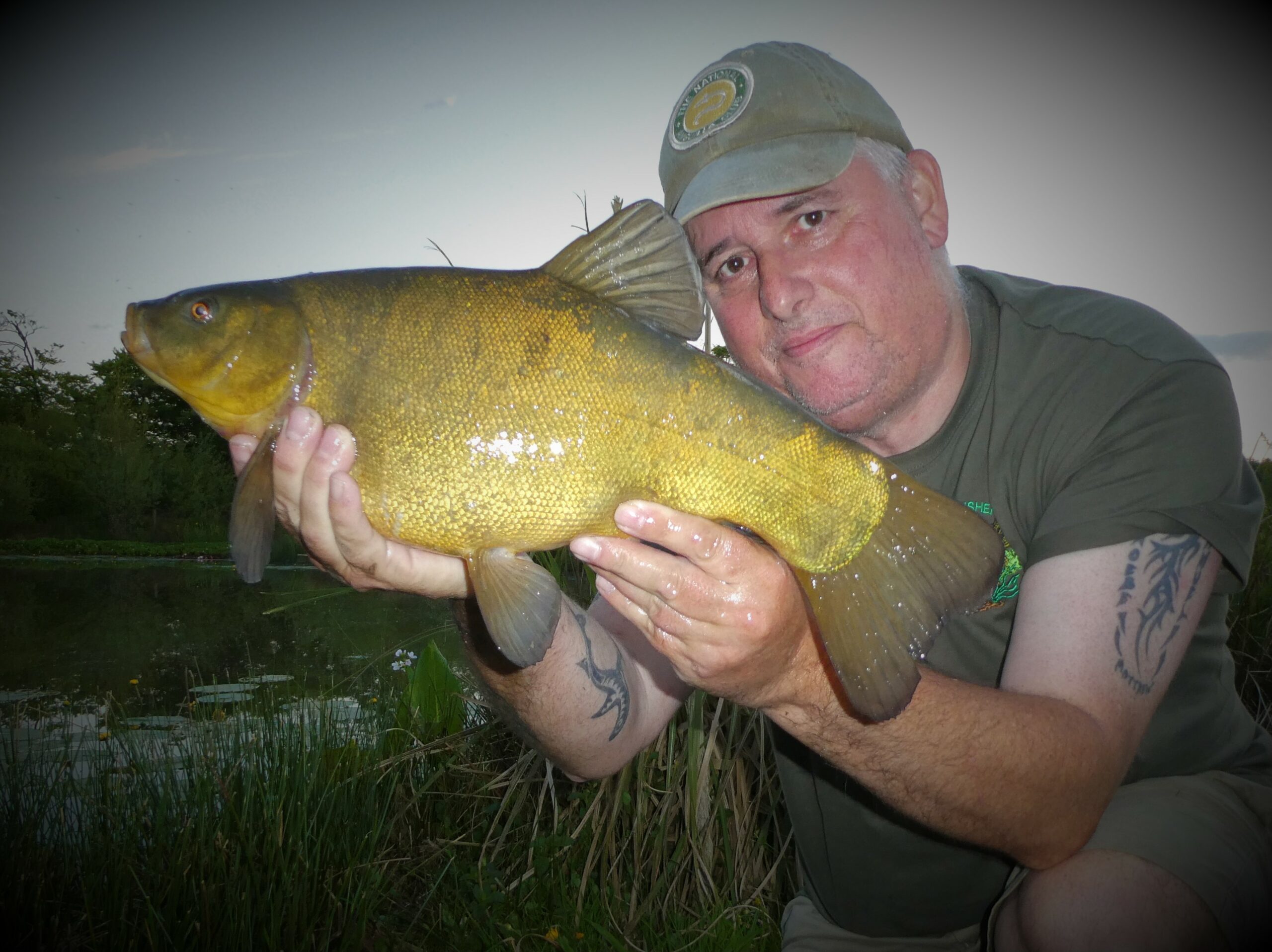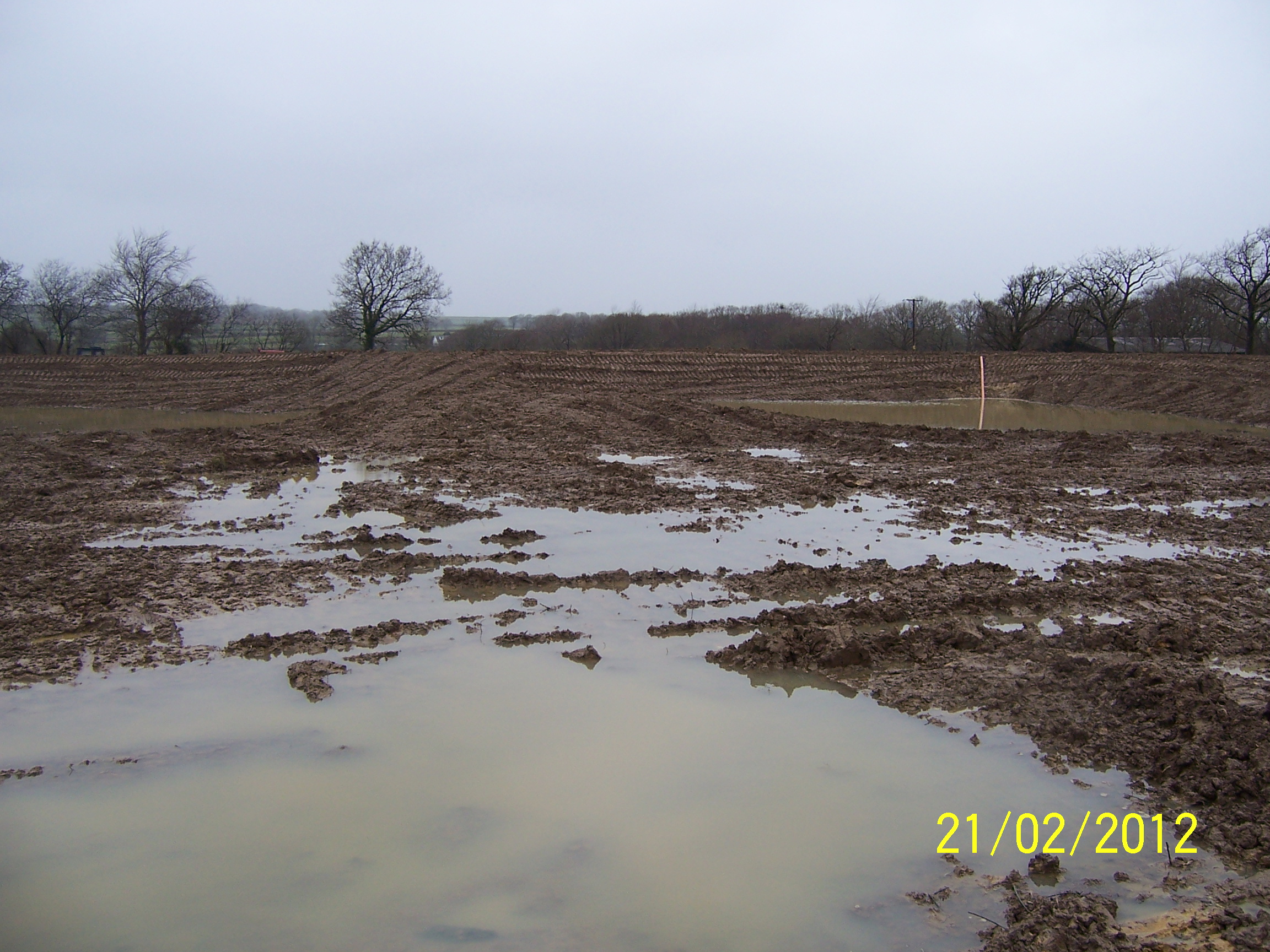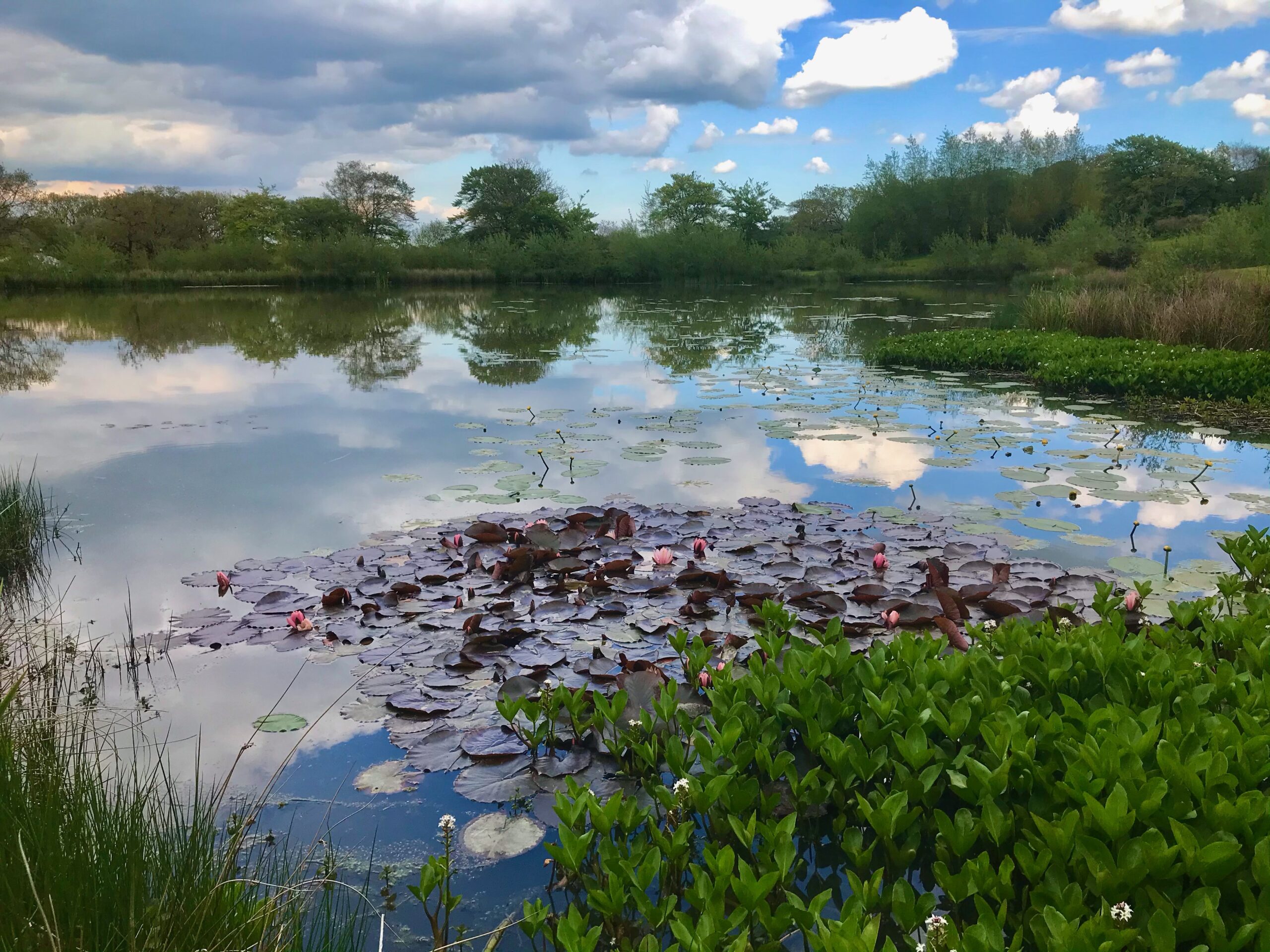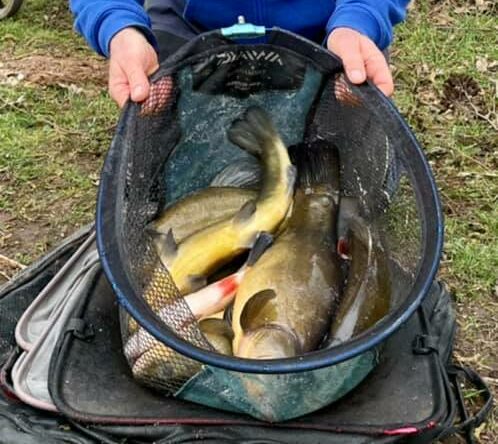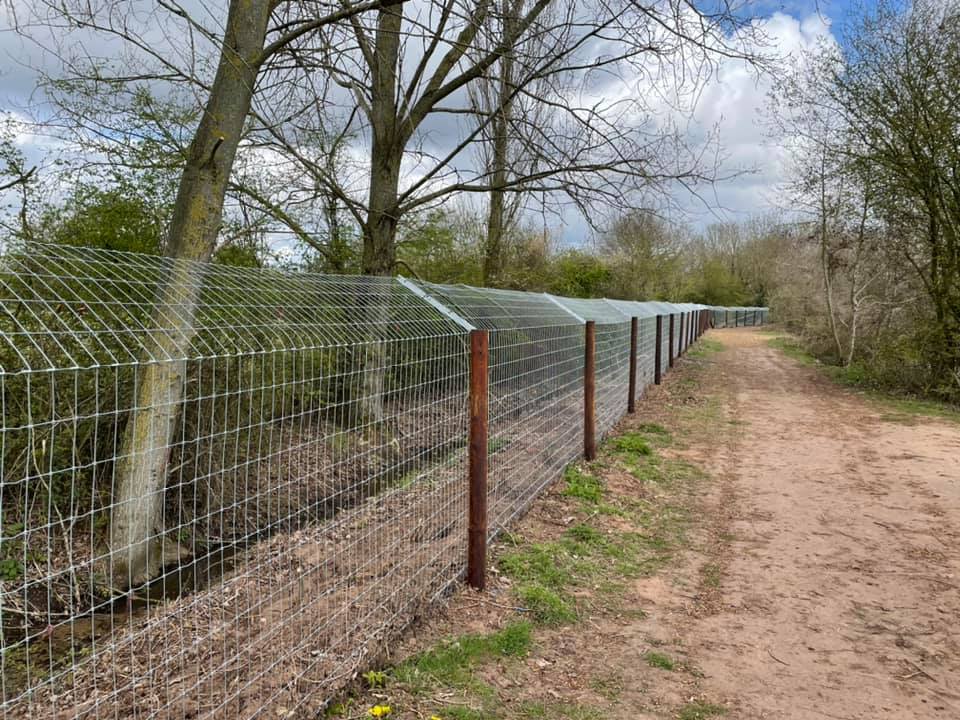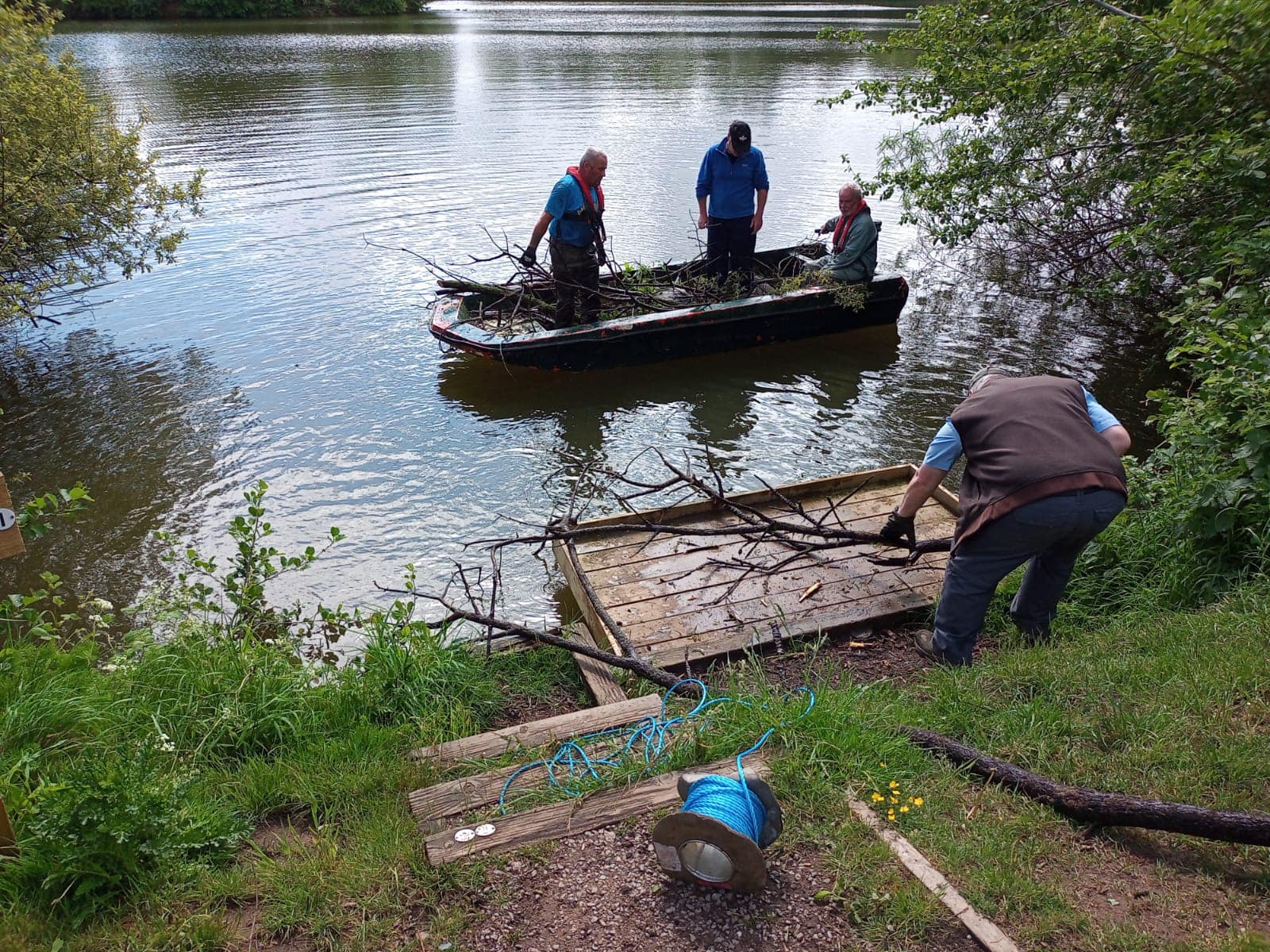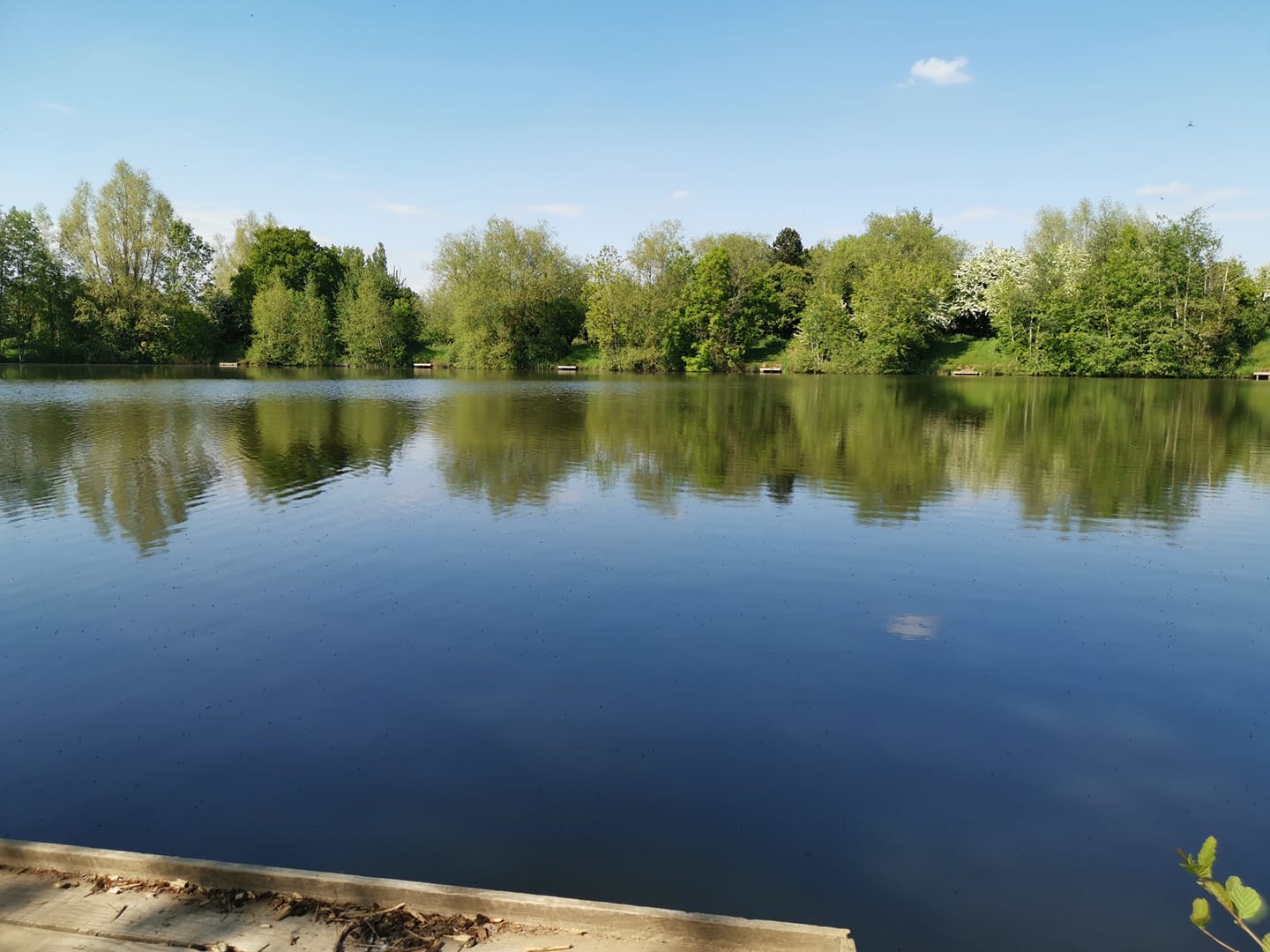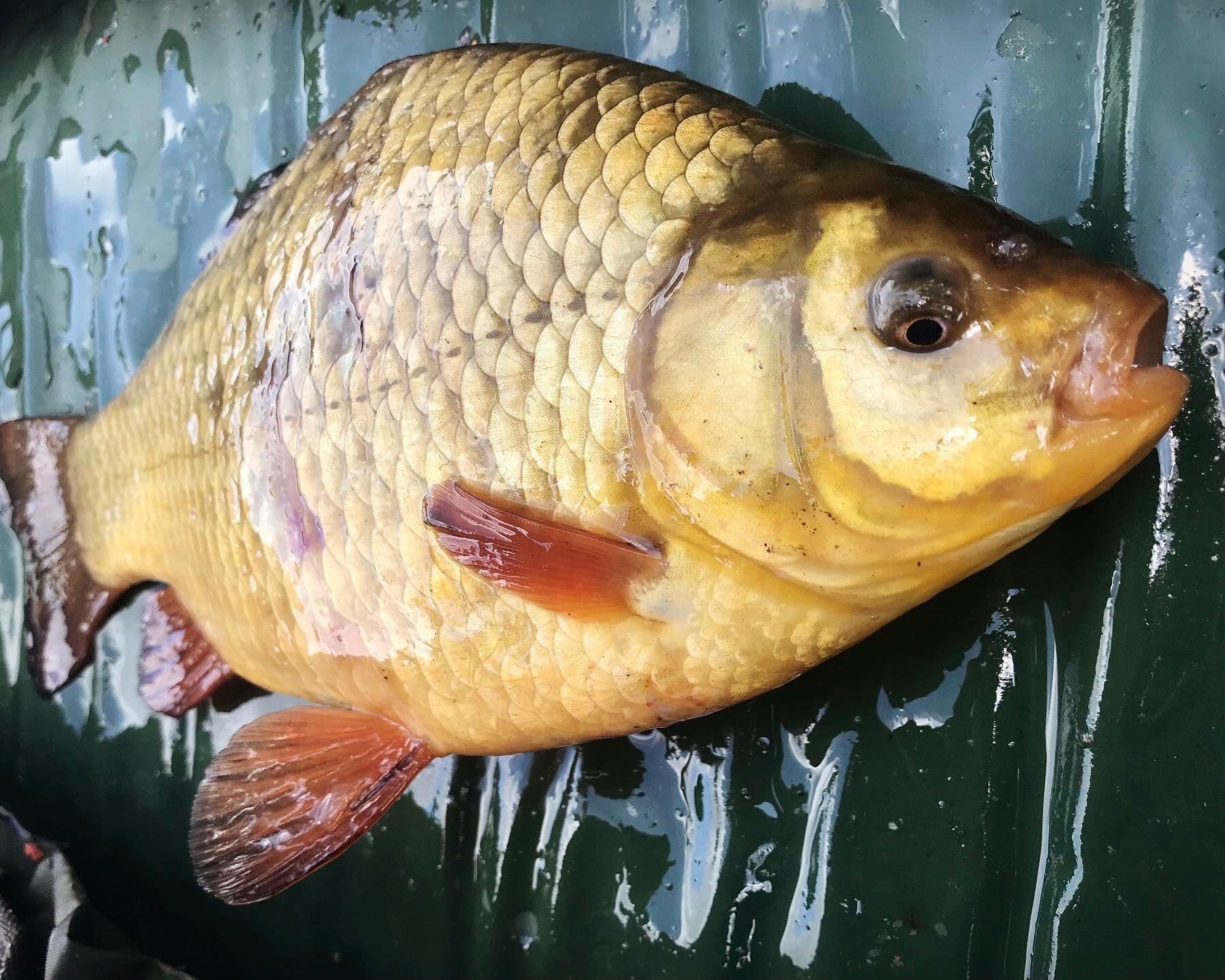Tench Fishing: The Future
Page Shortcuts:
- Tench Today
- Tench Habitat
- Raising Tench
- Tench From Calverton Fish Farm
- Creating A Tench Fishery – Case Studies
- Useful Resources
Tench Fishing: The Future – “Making Room for Tench”
A Joint initiative between the Tenchfishers and the Angling Trust to foster the preservation of tench and tench fisheries.
The Tenchfishers are a long-established group of anglers with a passion for all things tench. Not only do they seek to catch and enjoy their chosen species, they also aspire to put something back into angling and promote tench in a world where other species so frequently dominate. There is space for everyone, and this joint initiative has emerged from a shared vision – a passion to make something happen by providing knowledge and expertise for a wider audience of individuals, clubs and associations.
More information about the Tenchfishers is AVAILABLE HERE on their website. Be sure to also check out Tenchfishers TV: A regularly updated collection of YouTube films produced by members of the Tenchfishers specifically for fellow Tench enthusiasts to enjoy. Content encompasses everything from anglers fishing session diaries, to exciting underwater rig & fish footage!
“Tench Fishing: The Future came to life with a meeting at the Environment Agency National Fish Farm at Calverton [originally as the Tench Heritage Alliance] and has evolved into the portal you are now reading. We aim to provide a knowledge base to inspire and inform about tench and tench fishing. We do not claim to know everything but certainly have access to a high grade of expertise and information sources through our alliance. I hope you enjoy the content in this site and please contact us should any further information be required.”
– Ian Peacock: Chairman, the Tenchfishers.
“There are, of course, a good number of quality tench waters in the UK but the total has declined significantly over the last half-century and their distribution is uneven. Some anglers now even refer to tench fishing in the past tense. We hope to help associations preserve the tench waters they have and to create new ones where they have a range of still water venues. These goals need planning and the application of resources and above all a willingness to make room for tench.”
– Phil Jackson: President, the Tenchfishers
To contact the Tenchfishers directly regarding this project, address emails to tenchfisherstha@gmail.com
TENCH TODAY
The Tench
The popularity of the tench is easy to understand, where conditions are suitable they can exist in good numbers and grow to a good size and on appropriate tackle, give a good account of themselves.
The tench (Tinca tinca) is so distinctive that whilst it is a member of the family cyprinidae (carps) it is afforded its own subfamily (Tincinae) and genus (Tinca) of which it is the sole member. It has a wide geographic range and distribution, primarily across Europe and Eurasia, the extent of its “natural” range has been influenced by man having been historically seen, in some cultures, as an edible table fish.
The tench is one of our most recognisable fish, famed for its muscular appearance, paintbrush-like tail fin, small scales and green colouration and of course the “small red eye”. The small pair of barbels at the corner of the mouth, may go unnoticed to the casual observer.
The sexes of mature tench are readily distinguished with males having noticeable ventral, lateral muscular protuberances and thickened leading edge to the pelvic fins. The extent of these characteristics may vary depending on the time of year and age of the fish and whilst their role has been studied no clear evidence exists for their purpose.
Fishing for Tench
Tench are amenable to a number of different angling approaches and techniques, from a few pleasant hours whiled away fishing the classic ‘lift method” using a traditional quill float with a hook bait that reflects the catholic tastes of the tench, to a multi rod, “session” approach fishing at longer range on larger waters.
In the summer season, tench are caught mostly in the daylight. There can be a period in early spring where anglers report fish caught at night but generally tench feed most consistently during daylight hours. We can go further and say that that they mainly feed from morning to lunchtime as evidenced by the extensive catch return records of The Tenchfishers. This very convenient “office hours” feeding habit makes them amenable to day anglers, whether “pleasure” or “specimen” anglers.
The average weight of tench would appear to be increasing and whilst a 5lb tench was a target specimen fish a specimen fish today would perhaps be seen to be 6-7lb. Overall, 8lb fish are exceptional. Fish over 10lbs are, it would seem to some commonly reported, but are in fact rare specimens and fish in excess of 11lb are very rare indeed.
Taking care of Tench
The distribution of the tench reflects in part their tolerance of a wide range of conditions. Whilst they are found in slower moving lowland rivers they are primarily seen as fish of still waters. To grow to a specimen size tench generally need some space and stability. Tench are slow growing, long lived fish and thus need some consistency in food availability and appropriate spawning sites. Whilst they will spawn each year, they are late spawners, perhaps the latest spawner of all freshwater fish in the UK and thus the success of each spawning event can be very variable.
Tench can coexist with king carp and indeed on some waters where there is a sensible balance in stocking levels and good management (not just above the water line but more importantly below). The natural diet of both tench and carp are very similar, although clearly king carp can take larger individual food items. Photographic evidence often shows tench and carp feeding together in relative harmony. However, if carp, and or bream, are present in higher numbers and biomass then tench can suffer and fail to reach their potential and ultimately may decline in size and number.
Tench, in an ideal environment and without excessive competition can thrive in smaller waters, but tench do need adequate room. The largest specimens almost always occur in the larger waters, most commonly gravel pits but also larger reservoirs. Mature pools of 3 – 10 acres, if well managed and with a thought to the tench can provide excellent fishing.
There are relatively few fisheries managed as tench fisheries, despite the undoubted popularity of the species. At best, the more enlightened carp fishery owners are aware of the popularity of tench fishing and offer opportunities to tench anglers by a Spring ticket from March/April to the end of June.
Carp fisheries can readily be “boosted” by the purchase of additional stock and it is not uncommon on some “specimen” carp waters to stock with fish into double figures and with the rapid growth of modern strains these fish can rapidly grow to 30lb fish and provide years of sport.
On the other hand, Tench are relatively slow growing and quite expensive to rear and thus expensive to buy, and larger specimens are often difficult to source. So once a fishery that once contained good or specimen sized fish declines it is very difficult and expensive to restore. More emphasis must be placed on the longer-term sustainability of current waters that produce good tench otherwise the national status of the well-loved tench may continue to decline.
BUILDING AND ESTABLISHING A TENCH FISHERY
Tench Habitat
There are no hard and fast rules, but here are a few factors to think about when establishing a lake with a focus on tench. We would always recommend that you employ a qualified fisheries consultant to advise on the suitability of your proposed water and how the environment might be improved.
pH
The pH level of the water ideally should be over 7. If it drops much below 6.8 it may affect the growth rate of the fish, by limiting the level of invertebrate life. It may be possible to increase the pH of smaller waters by the application of calcium carbonate either in powder form over the lake or in aggregate form in a feeder stream but do seek qualified advice first and ensure several water samples are taken over time to get a reasonably accurate picture.
Macrophytes
Weed is quite important but initially leave the water and see how the tench grow. If the dissolved oxygen level falls to low levels in summer consider planting with oxygenators like hornwort. If at all possible do undertake a survey of the existing plant life. Marginal reeds are a positive feature as young tench will often hide in them away from predators.
Weeds to avoid, if possible, are Canadian pondweed (Elodea canadensis) – non-native and invasive, curled pondweed (Potamagetum crispus) which is very tough and invasive. Also, lilies are of little value and don’t oxygenate the water. They are also able to grow in 6 feet of water (white lilies) or 5 feet in the case of yellow lilies. Tench can be impossible to extract from them. They certainly look attractive and add character but they do tend to spread and can be difficult to thin out. So, proceed with caution. There are lots of native marginals you can plant to make the water attractive.
Fish Refuge
A sanctuary in the form of a gabion (a submerged metal frame filled with branches) will provide cover from predators. They can be discreetly marked to stop people casting into them. A floating (but anchored) island is also very good for cover. These can be planted so they look natural. Gabions and floating islands do need managing as they can act as magnets for the less discerning angler who can’t resist casting as close to them as possible and see them simply as “a feature”.
Depth
Ideally a tench water will have a decent depth (4 to 6 feet is sufficient) but preferred spawning depth is 2-3 feet, so shallows are important. Ideally these will be quite weedy to assist fry survival. Possibly arrowhead (Sagittaria sagittfolia ) or mare’s tail (Hippuris vulgaris) could be planted. They won’t spread to the deeper water but just start with a few and see how they go. Any standing reeds should be left, unless they impede fishing; they assist water quality and may provide spawning sites too. Obviously monitor their spread.
Marginal Vegetation
Overhanging tress are valuable in providing cover and shade and shouldn’t be cut back unnecessarily but there should be plenty of open banks too as light penetration is important and excessive leaf fall my encourage silting and reduce the pH level. Willow roots can used by tench as spawning sites.
Tench Stocking And Numbers Of Fish
Initial stock is best obtained from a reputable, licenced dealer. They are not cheap and fish in the 8-10” range are commonly used for stocking, though they can be brought to a bigger (cormorant-proof) size in a stock pond. It is not possible to give generalised advice on stocking levels as this depends on so many factors. Again, it is advisable to seek qualified advice.
Tench Growth Rate
Tench growth slowly for the first three years then they generally accelerate. A good growth rate then would be 8oz a year. In rare very suitable environments a pound a year may be attained but this really is exceptional.
Male tench will grow at a slightly slower rate and may not live as long as the females, which frequently live for 20 years or more.
It is useful to check the growth rate of the stock and angling returns will give you are rough idea. It will also pay to check on the proportion of male to females.
Population levels of fish are important in determining growth rates. It is generally better to limit rival species in the lake – both in terms of numbers and variety. Significant populations of close rival species like carp and bream will often limit the tench size and total population but of course venues vary and there are no hard and fast rules. The key idea however, is to “make room for tench”. It may well be advisable to protect your valuable stock with underwater refuges.
Co-habiting Fish Species
Crucians make good stocking companions with tench and the growth of crucian and tench fisheries has been a positive trend in recent years. It is well worth looking at the Angling Trust pages devoted to the National Crucian Conservation Project (NCCP).
Raising Tench
The Tenchfishers went to visit Arron Standing of Coarse Fish UK (www.coarse-fish-UK.com) down in Sussex. Arron breeds thousands of tench a year in a plethora of stock ponds and here are his key ideas on raising tench.
Obviously, Arron is talking about a largescale professional operation and his ideas represent an ideal but any club wishing to raise tench will hopefully find this information useful.
Brood Stock
Arron uses his experienced eye to select his brood stock from thousands of young fish by their size, strength and shape. These fish will be three to four years old and around a pound in weight and they are kept as brood stock only for a few seasons. This is because the spawn is more viable with a higher hatch rate in younger tench.
Stock Ponds
Alkali water is best for growth rates, that is above pH 7. A level of pH8.5 is ideal. Arron’s lakes are on chalk substrate in the South Downs hence they naturally have a high pH level. Put another way, he recommends a water hardness rating of at least 90 milligrams per litre of water as calcium carbonate (61-120 mg/l is classified as moderately hard).
A stock ponds ideally needs to be quite large so as not to overcrowd the tench. A good size would be 30 metres by 15 metres and not be too deep, so that the water warms up relatively quickly. A good configuration would be a pond of two to six feet deep with a shallow gradient from one end to the other. Something like amphibious bistort (Persicaria amphibia), which grows in water up to 3 feet deep, can provide cover but should only extend to a maximum of a third of the area.
Ideally ponds should be drained between cycles (usually, two or three years). The silt is removed and the area of the lakebed treated with hydrated lime (calcium hydroxide) before refilling. This kills parasites and diseases and maintains the fertility of the water. Hydrated lime must NOT be added to a pond with fish in it as it will probably prove fatal. However, Siltex (a porous form of calcium carbonate) can be safely added to stocked ponds to improve the water quality. Calcium is important for growth.
Stock ponds should be fairly open with not too many trees nearby. Light penetration is important and tannins from leaf fall will tend to make the water more acidic.
Fish
The ideal is to raise cormorant-proof sized tench (around 2lb) so they have a chance of avoiding avian predation. It is possible that this size can be achieved with a stock of two-year-old, eight-to-ten-inch fish in two summers if they are not overstocked. In the size of pond mentioned above, around 200 fish of eight to ten inches would be appropriate. An added advantage of two-year-old stock fish is that at that age they can be sexed.
Tench seem to do best in stock ponds if they are not mixed with other species. Eight-to-ten-inch fish will cost around £7.00 each. If possible, it is more economical to raise them to 2 to 2½ lb than buying them in at the larger size.
Eight-to-ten-inch tench are currently around £7.00 each. There is always a big demand for tench and they always sell out. Big tench cost around £17 a pound.
Feed
In the summer it is important to feed them little and often. Growth is best achieved by the use of premium, non-vegetable based, high fishmeal content pellets (e.g. by Coppens or Aqua) which have a better conversion rate. Small pellets (2-3mm) are more digestible and are better than larger ones. The rule is to feed 2% of the total weight of fish a day and 3% if it is really warm. (That means if you have 100lb of tench, provide 2lb of feed). Below 14 degrees C there is only a need to provide very low levels of maintenance feed, and none at all in the colder months, as feed won’t convert into growth.
Protection
Otter-proof fencing should be installed all around the sides of the pond at a height that allows for marginal reeds, as shown in the picture. Then a tennis court style mesh, no bigger than 1 ¼ inches, should be extended right over the top. Nets are a must as they are needed to keep out birds as small as dabchicks. They are more secure than “string ponds” where cormorants can learn to fly in between the ropes.
Tench From Calverton Fish Farm
In 2017 members of the Tenchfishers visited the Environment Agency’s fish farm at Calverton. The purpose of the visit was to find out more about more about their work in breeding thousands of tench for stocking purposes.
We would like to thank Team Leader Alan Henshaw and James “Rab” Rabjohns, the Technical Officer, for giving so freely of their time.
Calverton, an Introduction
The Calverton site, situated on the outskirts of Nottingham covers some 18 acres spread either side of Moor Lane. Today it is dedicated to the production of coarse fish having originally been set up as a trout farm by the Trent River Board in the 1930s. Its main focus is the production of “riverine” species, most notably barbel, chub, roach, bream, dace and grayling, although tench, rudd and crucians also feature.
All the EA’s stock-sized fish – around 450,000 individual specimens – are produced and released from the farm into UK waterways every year. In addition, hundreds of thousands of excess fish larvae are seeded into watercourses, often to compensate for the temporary removal of brood stock. This sterling work is carried on by a dedicated team of seven people funded by licence fee money.
Breeding Fish
The breeding process is tricky, tightly controlled and subject to a strict hygiene regime. Biosecurity is given the highest priority on the farm.
The first stage in the spring is to “borrow” brood fish from a (preferably local) watercourse. The brood fish are captured using electro-fishing, in most cases during the river close season. Only moderate sized females are used as the large ones may contain more spawn than can be effectively managed and Calverton hates waste!
The brood stock are kept in quarantined tanks until the fish are adjudged to be sufficiently gravid. The females are then injected with a natural hormone called Carp Pituitary Extract (CPE) which is obtained from the pituitary glands of carp, which are situated just under the brain of the fish. This technique works for most cyprinid fish as the hormone injection encourages the females to release their eggs and the males to release their sperm or milt.
Relatively little milt is needed from the male fish and this is mixed with the eggs by gently stirring the mixture with a primary goose feather. The brood fish are then rested for a few days before being returned to their original homes.
The egg/milt mixture is treated with a solution that ensures a high fertilisation rate. After approximately 30 minutes, they are gently poured out onto mesh trays where they are incubated for up to thirty days, depending on the species. The trays are immersed in long troughs were they are continuously supplied with fresh, well oxygenated, temperature controlled water. When the eggs hatch, the tiny larvae will attach themselves to the sides of the tray and begin to absorb their yolk sacs.
After a number of days the larvae will have absorbed all of their internal yolk and they will begin to search for external food. At this stage, the minute fry are fed a mixture of natural and artificial food. The natural food is obtained from prepared ponds and is supplemented with brine shrimp (or Artemia), which are less than a quarter of a millimetre long and look like tiny grains of sand.
Meanwhile, the ponds have been prepared to receive the hatchlings. They are drained in January or February; the beds of the ponds are then raked and limed before they are refilled with pure groundwater. Manure is then added to encourage the growth of algae and the tiny invertebrates that constitute the first-feed. The first-year ponds, each of which usually contains a single species, are covered by poly tunnels to increase the water temperature and offer some protection from predators (except kingfishers that visit every day but are allowed their share).
The baby fish are effectively swimming in a food-soup and grow rapidly in the early summer. Pumps continually circulate the water to oxygenate it and to strengthen the fish by making sure they have to work for their food. At the end of the summer, the average size of the fingerlings ranges from 3cm to 7cm, depending on the species.
The fish are kept for a further summer in outdoor uncovered rearing pools where a technique called “polyculture” is used. The team have discovered that because different species have different feeding habits and occupy slightly different “niches”, a mixture of fish species reduces competition and yields a higher growth and production rate. This cycle takes at least 18 months and ensures that all of the fish produced at Calverton are fit for purpose and well-equipped for life “in the wild”. The “two-summer” fish are then ready for release during the following winter months.
Tench
About a quarter of the fish produced at Calverton are still water species and there has been a significant demand for pure DNA tested crucians in recent years. The unit has also been producing tench since the late 1980s and averages between 20,000 and 25,000 2-summer fish each year.
Tinca tinca are not the easiest fish to raise. Brood stock have to be gathered either by angling or by netting from a health-checked source, fish of around 2lb being the preferred size. They are the last species to come into spawning condition, usually from mid-June onwards, and the eggs are incubated for 3 days at 22oC. Compare that with dace that are stripped in early March and incubated for 30 days at 10oC.
Tench eggs are tiny and the spawn resembles a thick pea-green soup. They are however, one of the most fecund species of fish with up to 250,000 individual eggs per kilo (2.2lb) body weight. Female tench are “batch spawners” meaning that not all the eggs ripen at the same time. This can make them difficult to manually strip.
The timing has to be right as in a matter of hours, the eggs become over-ripe and fail to fertilize. The tiny larvae are allowed to settle on, and adhere to, a special plastic mesh, which mimics pondweed. The tiny fish have adhesive glands on their heads for this specific purpose.
However, there are further problems. Initially the tiny tenchlings, which are no longer than 4mm when hatched, grow very slowly, a factor that is compounded by the late spawning and correspondingly short first summer. These larvae are small enough to be eaten by some species of tiny crustaceans called Cyclopoid Copepods which are common in freshwater habitats. In effect, the prey becomes the predator! So the tenchlings have to be carefully isolated in the initial stages.
However, it is wrong to say that tench are an entirely slow-growing species as their growth in the second year can be quite spectacular. Two-summer Tench can be up to 20cm long which can lead to yet another problem. After harvest they need to be graded very quickly because individuals can vary significantly in size. This natural size difference can lead to cannibalism and if left “ungraded” they will eat their smaller brethren. It is not unusual to find decapitated tench floating on the surface of a holding tank if large fish are kept with smaller ones.
Conclusion
We were left with a profound respect for the knowledge and dedication of the Calverton team. They produce beautiful young tench and understandably the demand for them exceeds supply. The space for lake species at Calverton is limited and given the price of land locally the opportunity for expansion is restricted. Should your club need advice or help in developing a successful tench fishery, the key is to getting your local EA Fisheries Team involved at an early stage.
CASE STUDY - CREATING A TENCH SANCTUARY (Sanctuary Lakes in Devon, by Steve Dawe)
Having created a mixed-species lake on a boggy site in Devon, my father and I decided in 2012 to construct a second lake specifically for tench, having learned a lot from the first experience.
We appointed a contractor who knew how to build lakes for fishing. Well, he actually knew a lot about everything fish-related. The lake we dug out, although only an acre in size, was full of features, with bars, troughs, nice shallow margins and again fed by several good-sized springs bubbling up. Once lined with clay, the lakebed was completely covered with a thick layer of topsoil and manure was placed in the margins. When the lake was filled, this gave a real boost to insect life and provided an immediate food source.
I was straight in with the water plants, digging in several types of water lily and although the Nymphaea alba is our natural white-flowered lily, I mixed it up with reds, yellows and pinks, several of which came from garden ponds and were just getting too big. With an average depth of three feet and with just six feet at the deepest part, it suits water lilies perfectly. There were a few issues that I think shaped the fishery into a potentially great water for tench to thrive in, some of which I am now living to regret and some I think were a great move. A fellow fishery owner once told me you spend the first ten years of a fishery putting stuff in and the rest of your life trying to remove it!
The first issue was the inclusion of the water plant Nuphar lutea, commonly known as the ‘brandy bottle’ due to the alcoholic aroma emitted from the yellow flowers. This plant, with its large waxy leaves, can grow in six feet of water, so that’s a problem with a lake six feet at the deepest. The plant also quickly spreads with seed pods that float on the water and large rhizomes that are thick, tough and very hard to cut through. I put this plant into the lake because I had in my head the stereotypical tench water, with large rafts of lilies punctuated by the odd gap where feeding tench could be seen by the fizzing of numerous bubbles. This was indeed the case because the plants spread, creating huge beds and as soon as you look at the lake it screams tench. This plant along with the Nymphaea alba have provided the tench with a fantastic environment and without them I don’t believe it would be a success.
These surface living plants are crucial to the other keystone species living at the lake, dragonfly and common blue damsels can be seen on every leaf. Bees visit the flowers, while frogs and toads hide among them. The ‘brandy bottles’ have, over the last few years started to take over the lake to the detriment of the other lilies, which are becoming smothered by the bigger leaves of the Nuphar Lutea. I need to get in the water and do some serious underwater removal of the bigger rhizomes, not a task I am relishing.
The next issue that contributed in a positive way to the construction of this tench lake was the introduction of a water plant known as Menyanthes trifoliata or ‘bogbean’, a plant that as the name suggests, thrives in bogs, marshes and fens. I planted it in two shallow bays and allowed it to thrive. The plant resembles the floating plants of the Amazon, with large dense floating beds sat on the water’s surface, flowering between March and June, providing dense surface cover and shade just like the lilies.
Below the surface, the bogbean forms a lattice-work of strong wiry stems that form a natural refuge, with a barrier against large predators such as cormorant, otter and large pike. They also provide the perfect hatchery for tench with the fry able to remain totally safe and shaded. It wasn’t until I witnessed the tench spawning in both of the bogbean beds every year that I realised just how good it was for that purpose. This plant is, however, pushing the limits of where I want it to expand to and will be subject to some pruning.
I have also planted one plant that always reminds me of the late great John Wilson – the Lythrum salicaria commonly known as purple loosestrife. John very often pointed out this stunning purple plant growing along a river he was fishing on. These plants, along with many others such as yellow flag iris (Iris pseudacorus), arrowhead (Sagittarius sagittifolia), water mint (Mentha aquatic), brooklime (Veronica beccabunga) and fringe lily (Nymphoides peltata), all made it on to the fishery, together with a few not so visible plants like hornwort (Ceratophyllum demersum) that I have put in the tench lake. As a native oxygenator, it’s a great addition.
One point that visitors to the lakes just can’t believe is that the tench lake was started off with a stocking of just six tench, four females and two males, in May 2012 and furthermore, they were barely a pound in weight. Not even ten years later, we had captures of nearly forty fish in a day, between 2½ lb and 4lb. This really is our finest achievement and I know from many other fisheries locally how they have struggled to get their tench to thrive.
The tench stocking was a massive success but on the other hand, I made a huge error with the rudd, stocking six one-pound fish in the hope that the shoal of six fish would just grow big and be a success story like the tench. The rudd population exploded and hundreds of the little critters swam around removing natural food from the water. I added perch and they did well to start with but then I started finding a few big perch and more rudd-sized perch.
The next mistake I made was to put in a few jack pike to deal with all these annoying small fish and like the perch, they started off doing a great job smashing into the fry. However, like living in lockdown, they got lazy, big and slow and decided it was easier to eat one tench a week rather than chase the fry. Recently I had a 4lb tench taken by a 15lb pike. Things are pretty balanced now but it goes to prove that reacting to one problem can create a bigger one.
Both my dad and I are lovers of wildlife, so much so that we paid for an ecologist to survey the site and give us some advice on habitats. This was a worthwhile experience as she quickly identified several species that visited the lakes and following that visit, we added bat boxes, left some wildflower meadow, created a wildlife pond and constructed some large log piles as habitat. The site was visited by deer, badgers, foxes and a family of stoats that moved into the log pile, no doubt attracted by the abundant rabbits.
It became a real oasis of species, however, with the arrival of the otters, we needed to take drastic action and erected a five wire mains-driven electric fence around the whole six-acre site at a significant cost. The cost was both financial and ecological because with the electric forcefield in place, everything was kept out and part of what we loved was no longer there. To get around this, we changed the bottom wire to an earth wire that still prevented otter ingress but allowed the smaller animals to pass freely. The lakes were once again full of frogs, toad and newts. Now we once again have the stoats, rabbits and voles and we have also had several grass snakes and adders, plus lizards which love to sunbathe on our stack of pallets.
Another creature I have been overjoyed to see is the glow worm, a large beetle Lampyris noctiluca.. It is the female that emits the green glow to attract a mate during June and July.
The huge diversity of habitat we have created with all the different ponds is a real benefit for the environment and I would urge anyone looking to create a pond or lake to consider the wildlife and habitat first and the anglers second. Who wants to fish in a sterile home-from-home environment? I for one want to be just a guest in the habitat that clearly belongs to the creatures that reside there.
So, to summarise the key points
- If digging out a new lake choose your land wisely, bearing in mind soil disposal, water availability and a source of clay lining material.
- Always work with the EA and follow their advice.
- Discuss construction options with contractors as early as possible.
- Make sure your planning application covers all the information they could need.
- Ensure you are creating an environment for the fish and wildlife foremost and the anglers can slot in.
- Think about the species you stock and the effects they may have as they grow larger and more numerous.
- Have a well thought out program of planting, some stuff takes years to establish.
- Design predator control measures because they will arrive at some point.
- Remember to take time to enjoy what you have created, it’s easy to get sucked into working every visit.
I hope that’s explained some of the issues connected with creating a little tench heaven. When I see anglers using their traditional tench gear to catch tench from amongst the lilies of our lake it makes me feel immensely proud. If anyone is thinking of creating their own fishery / pond and would like some further information just drop me a message.
Our website is https://sanctuarylakesdevon.wixsite.com/mysite
CASE STUDY - MAKING SPACE FOR TENCH AT ROYAL LEAMINGTON SPA ANGLING ASSOCIATION
The Royal Leamington Spa Angling Association was formed in 1890. The Association controls the fishing rights to stretches of the Warwickshire Avon, Leam and local canals, plus several reservoirs and former sand pits around the Leamington and Coventry area containing healthy stocks of tench.
One project, given the backing of members was the development of the Jubilee Pools complex on the outskirts of Coventry. The complex consists of two lakes: Island and Horseshoe, with Island being the larger of the two at approximately 9 acres. Both lakes contain a healthy head of carp, bream, and roach and perch with Horseshoe containing tench.
In 2014 following requests from many members who fished the complex, it was decided by the committee to promote Horseshoe Lake as a more balanced coarse fishery. Members had been asking for more tench and the forward-thinking committee realised they had to make room for them in the lake. Wheels were put in motion to remove approximately 350lb of carp and relocate them into Island Lake, an established carp water, to make way for stockings of tench to supplement the reasonable head of tench already present.
Horseshoe covers around 4.5 acres and runs to depths of 18 feet in one bay with the back bay running to ten feet. Marginal shelves of around six feet lend themselves nicely to float-fishing, a method favoured by many members fishing for tench.
An initial stocking of 350 tench of around the one-pound mark, was introduced in November 2014 from Coarse Fish UK and March 2015 saw a further 500 ten-inch tench stocked from the same supplier.
February 2017 saw a further 500 six-inch tench stocked along with 2 million tench larvae from EA Calverton. More young tench and crucians were added in 2021.
The tench, now room has been created with the removal of some but not all carp, have grown on well with many fish in the 2-4lb bracket showing, along with the odd five-pounder. All of the fish appear in good health and certainly have learned how to put a bend in a float-rod, being very spirited fighters.
The footfall of anglers now turning up specifically to have a day’s fishing for tench has increased with anglers coming from the Leicester and Birmingham areas to sample the sport on offer.
At AGMs, since the project was undertaken, there has only been praise for the initiative from members with no dissenting voices from the carp angling contingent of the club.
Leamington Angling Association also have other waters containing stocks of tench including Ryton Country Park, Napton and Snitterfield Reservoirs. The many “pleasure” anglers in the club enjoy spring and summer fishing for tench, roach, and bream but are happy to encounter the odd carp. They will often move onto the rivers later in the year, while the more serious specimen anglers come winter, will be found lure and drop shotting for perch and piking on the rivers and reservoirs.
Speaking to members on the bank there does seem to be a really healthy appetite for tench and general mixed coarse fishing; some have grown tired of the carp scene and are enjoying getting back to more traditional methods of fishing for other species, with the spirited tench as firm favourites.
In essence the Horseshoe project undertaken by the Association has proved to be very popular with many members within the club and the feedback from the bailiffs who also live on site has been overall extremely positive. So good progress has been made in furthering the cause of this most beautiful fish.
A real blueprint now exists for any other clubs wishing to undertake similar projects and I know the committee of the club would be more than happy to provide guidance and advice, as would the National Tench Heritage Alliance and the Tenchfishers.
We are looking forward with great optimism to a prosperous future for tench fishing within the club and proving to the younger members that it isn’t just carp that put a bend in the rod and put a smile on your face…
Royal Leamington Spa Angling Associations website is found at https://www.leamingtonangling.co.uk/
Below is an aerial footage film of Horseshoe Lake
CASE STUDY - GODALMING ANGLING SOCIETY'S MARSH FARM COMPLEX IN SURREY
This case study looks at a famous day-ticket venue, Marsh Farm in Surrey. It is an example of a highly successful commercial and club focussed tench & crucian fishery in these modern carp-focussed times.
Marsh Farm is under the ownership of Godalming Angling Society, which has a current membership of just under 2,000.
Marsh Farm is a gated complex of three small lakes: Harris Lake, Richardson Lake & Hill Lake.
There are 119 swims, secure parking, and an angling shop on-site. There is also disabled facilities.
The complex is situated adjacent to the Godalming AC members-only Johnson’s Lake which holds the current joint crucian record plus specimen carp & tench.
As well as day ticket pleasure fishing Marsh farm complex frequently hosts junior participation events run by Angling Trust qualified coaches.
Across the 3 lakes there is good swim access with numberous disabled designated swims which are priority access for those who qualify.
The lakes were created from scratch in 2000 on sheep grazing land that Godalming Angling Society has since transformed.
The mixed fishery opened in the summer of 2004 and offers opportunity to catch tench of decent size without the need to belong to a club or syndicate.
All three lakes were originally stocked with fish from Johnsons Lake and some have grown on to specimen sizes.
After the initial stocking some additional silver fish and bream were added to Richardson Lake but most of the 3 lakes recruitment has been natural.
The lakes are managed pro-actively by Godalming AS’s Fishery Management Committee. For example, recent works have been undertaken applying Siltex to the lakes to manage the sediment loading. There is also a structured programme of winter feeding on the lakes plus a lot of time & effort spent managing the margins and islands to benefit both angling access and fish habitat.
The complex is not subject to major Otter predation but avian predators are an increasing issue resulting in requirement to use deterrent cormorant wires and occasional licensed culling to take place.
There are very few snags in the man-made lakes which means suitably balanced fishing gear can be used safely and without the threat of a rogue big carp smashing delicate tackle.
The fish may be caught from all over the 3 lakes, but tench are notably caught tight to the islands with feeder tactics, however, margin float fishing tactics also produce. Because of the complex’s topography it can be windy causing powerful undertows which often make light floats a challenge to employ effectively although waggler fishing with loose-fed maggots is a successful tactic when possible.
The average stamp of tench seems to be around 4lbs with some taken to 7lbs. Specimen crucians of 2-3lbs are present in all 3 lakes plus roach, rudd with perch. Harris Lake holds the notably largest tench and Bream are only present in Richardson lake.
To find out more about Marsh Farm and Godalming Angling Society’s waters visit their website at: http://www.godalminganglingsociety.co.uk/article/marsh-farm-fisheries-home
